Light nuclei fuse and release energy. Heavy nuclei (heavier than Iron)
fission and release energy.
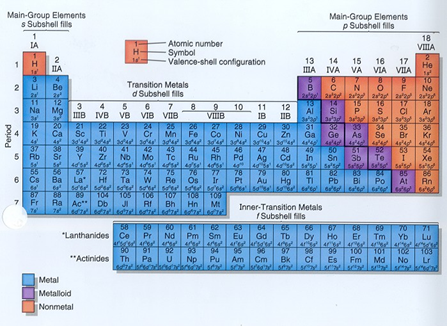
Uranium-235 and plutonium-239 split up when hit by a neutron, releasing
2 or 3 new neutrons and a lot of energy.
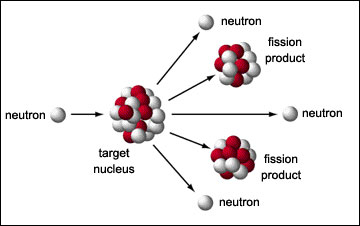
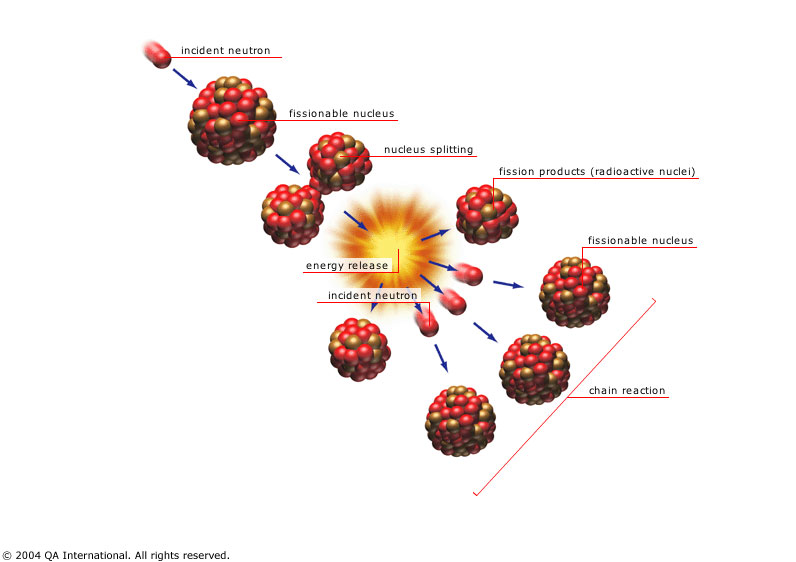
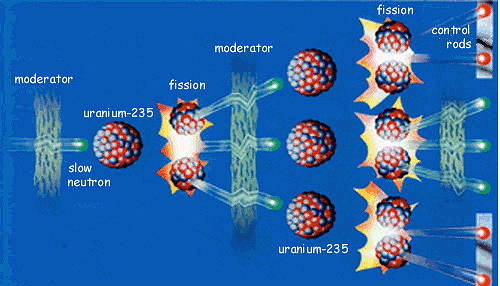
Critical mass:
Atoms are mostly empty space.
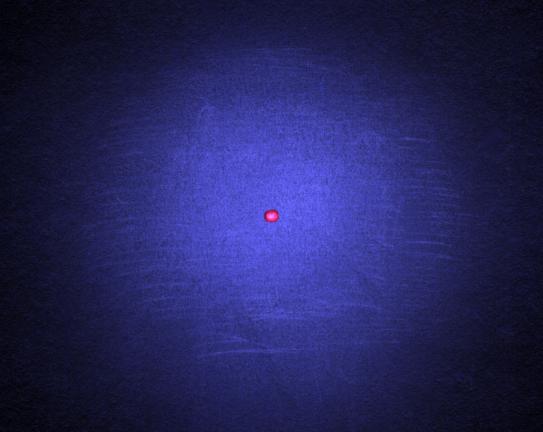
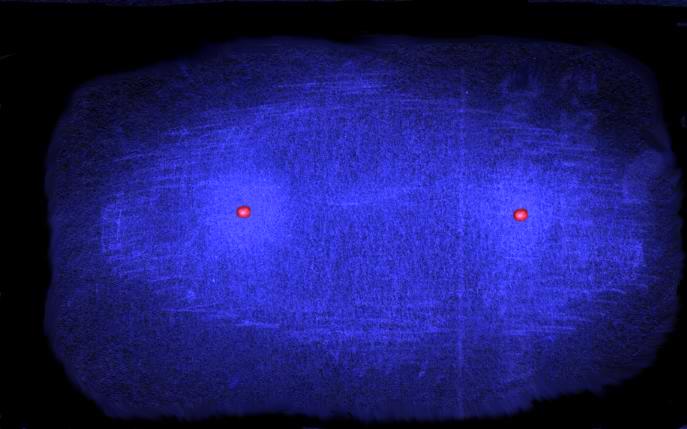
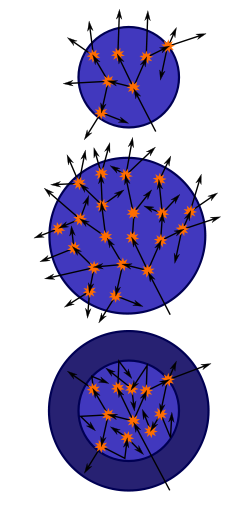
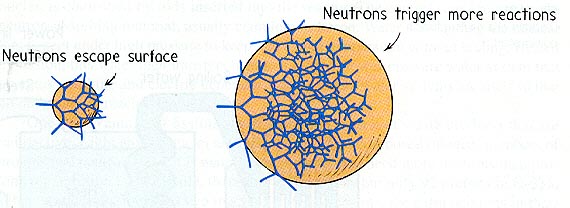
Assembly

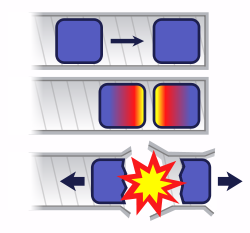
Uranium bomb
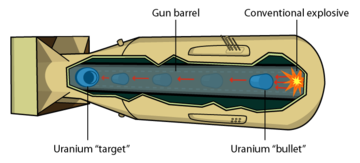
Uranium-235 and uranium-238.
Natural uranium is composed of two nuclear isotopes: 1 percent uranium-235
and 99 percent uranium-238.
Uranium-235: 92 protons and 143 neutrons.
Uranium-238: 92 protons and 146 neutrons.
Plutonium-239: 94 protons and 145 neutrons.
Plutonium-240: 94 protons and 146 neutrons.
Uranium-235 splits when struck by a neutron while
Uranium-238 does not. uranium-238 instead captures the neutron and
turns into plutonium-239, which can also be used to construct a
nuclear explosive.
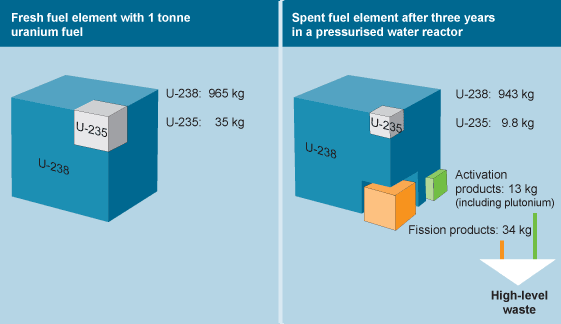
Uranium-235 is not easy to come by.
How do you extract the uranium-235 from
uranium-238? There are three methods.
Calutron (mass spectrometer)
A magnetic field exerts a sideways force on a moving charged particle,
causing its path to curve.
The magnetic force is proportional to the charge of the particle.
The inertia is proportional to the mass of the particle.
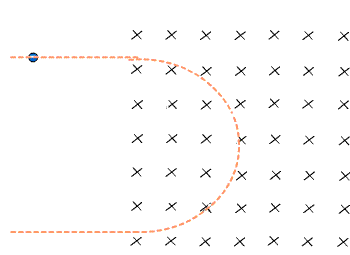

Magnetic force:

Force = charge * velocity * magnetic_field / speed_of_light
Two wires carrying a current attract each other by the magnetic force.
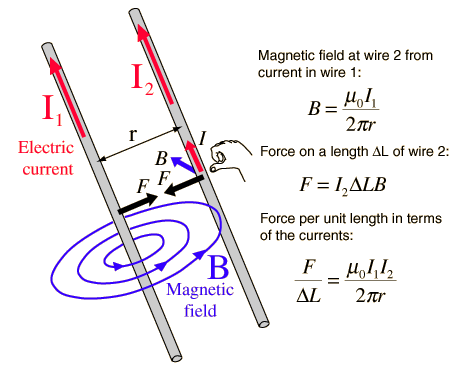
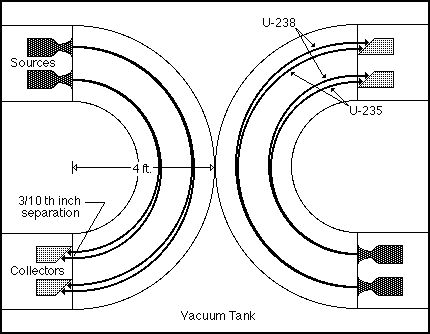
Uranium-235 and uranium-238 have the same charge, but uranium-238 has more
mass and thus more inertia. Thus the uranium-235 is curved more than the
uranium-238.
Gas centrifuge separation.
Uranium hexafluoride is a gas.
Buoyancy causes lighter gass to rise and denser gas to fall.
A centrifuge is a way of creating a high-gravity environment.
Pakistan stole blueprints for gas centrifuges and used them to purify
uranium.

Gas diffusion.
Lighter gas particles move faster.
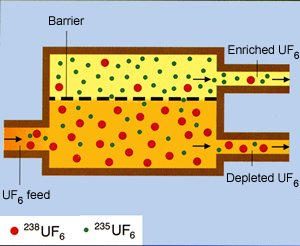
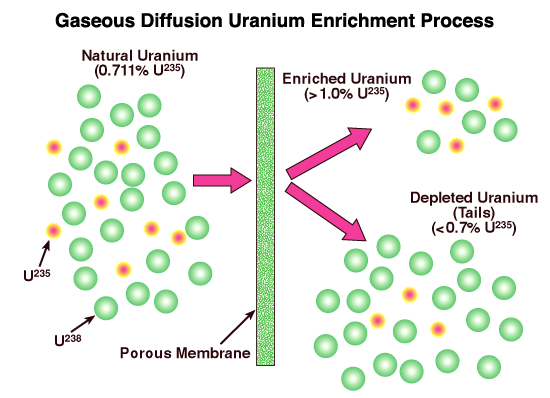
Plutonium-239:
In a nuclear reactor, uranium-235 fissions and produces neutrons.
These neutrons are captured by uranium-238 nuclei, which then turn into
plutonium-239 and plutonium-240. Plutonium-239 can be used as a nuclear
explosive. Plutonium-239 is also easy to separate from the uranium because they
have different chemical properties, such as their vaporization temperatures.
Uranium-235: 92 protons and 143 neutrons.
Uranium-238: 92 protons and 146 neutrons.
Plutonium-239: 94 protons and 145 neutrons.
Plutonium-240: 94 protons and 146 neutrons.
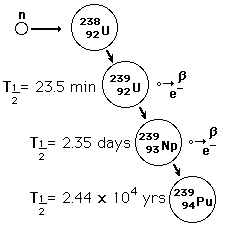
Plutonium bomb:
How to generate plutonium:
In a nuclear reactor with uranium-235 and uranium-238, the uranium-235
is fissioned and the neutrons that are generated are captured by the
uranium-238, converting it to plutonium-239 plus a small amount
of plutonium-240. Plutonium-239 is similar to uranium-235
in that both can cause a chain reaction explosion.
If you try to use plutonium-239 to make a bomb, the plutonium-240 contaminant
is highly radioactive and produces lots of neutrons, which speed up the
detonation of plutonium-239. The speedup is significant enough so as to require
that the plutonium-239 be assembled much more quickly than uranium-235. This
makes plutonium-239 much more difficult to detonate. The North Koreans are
working on this method and have so far not succeeded.
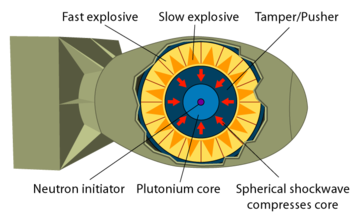
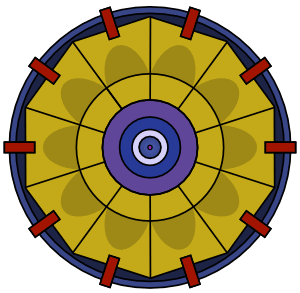
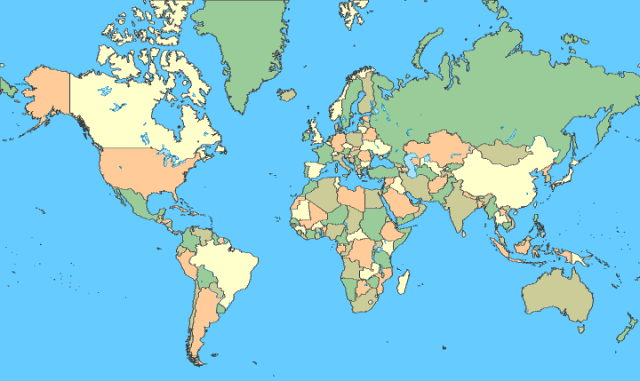
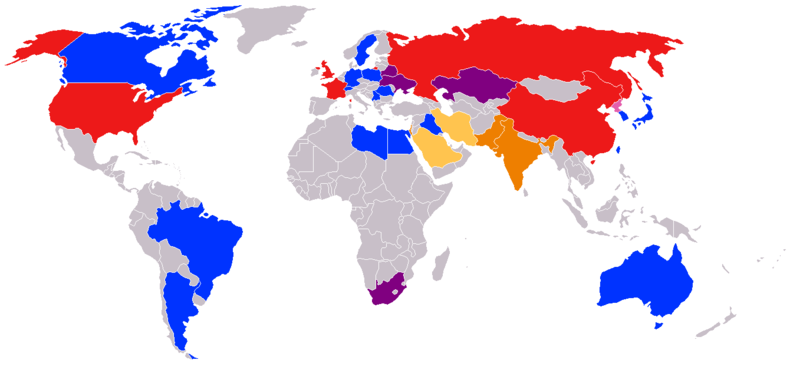
Development of nuclear weapons
Nuclear-armed states:
Fission Fusion
U.S.A. 1945 1954
Germany 1945 Attempted. Did not succeed.
Russia 1949 1953
Britain 1952 1957
France 1960 1968
China 1964 1967
Israel 1979 ? Undeclared
India 1974 Uranium
Pakistan 1990 Centrifuge enrichment of Uranium. Tested in 1998.
Built centrifuges from stolen designs.
North Korea 2006 (Plutonium). Detonation attempt fizzled
Also acquired centrifuges from Pakistan
North Korea Attempting to purify Uranium with centrifuges
South Africa 1980 Dismantled in 1991
Iran 1981 (Plutonium) 1981 Osirak reactor. Destroyed by Israel
Iraq 1993 Magnetic enrichment of Uranium. Dismantled after
Gulf War 1
Iraq 2003 Alleged by the United States. Proved to be untrue.
Iran 2009? Centrifuge enrichment of Uranium.
Will take a few years.
Libya -- Centrifuge enrichment of Uranium. Not completed.
Dismantled before completion.
Cooperated in the investigation that identified
Pakistan as the proliferator of Centrifuge design.
Quite a few states possess nuclear reactors for energy generation, but have
declined to develop nuclear weapons. These are Japan, Canada, Brasil,
Argentina, Sweden, Germany, Poland, Australia.
North Korea has intercontinental missiles, which they have sold to
Pakistan.
Hydrogen bomb:
Hydrogen has to be compressed to heat it up to the temperature where it
can fuse, releasing energy. The energy to compress the hydrogen comes from
the x-rays produced by a fission bomb.
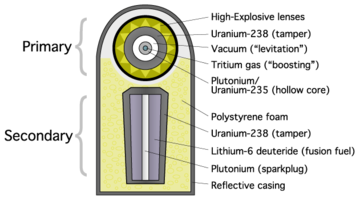
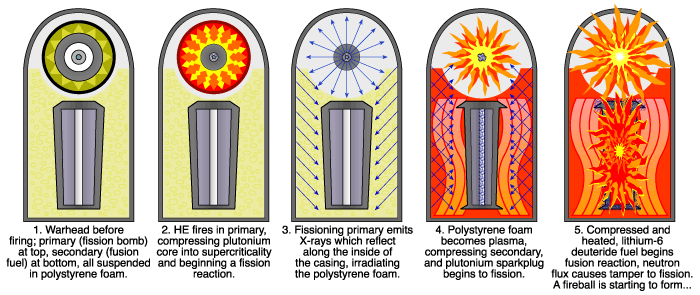
Nuclear reactor
In an automobile engine, gasoline burns, gets hot and expands and
pushes on the piston, which delivers power to the wheels.
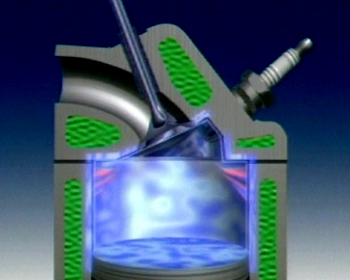
A coal-fired power plant is similar. Coal burns and turns water into steam,
which drives an electrical generator.
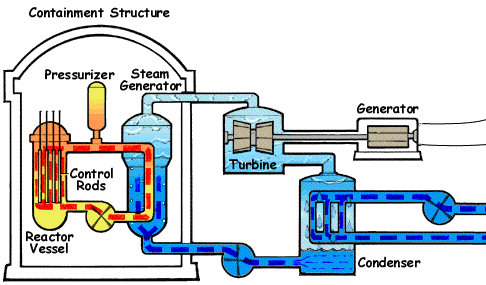
A nuclear reactor is similar to a coal reactor. The only difference is that
it's a nuclear reaction that's heating the water rather than coal.
What could go wrong?
If the uranium has less than critical mass, too many neutrons escape
and the reaction dies out.
If the uranium has more than a critical mass, the chain reaction snowballs
and the material blows up in a spectacular explosion.
The reaction needs to proceed at just the right rate. For every
nucleus that splits, exactly one neutron needs to hit another nucleus.
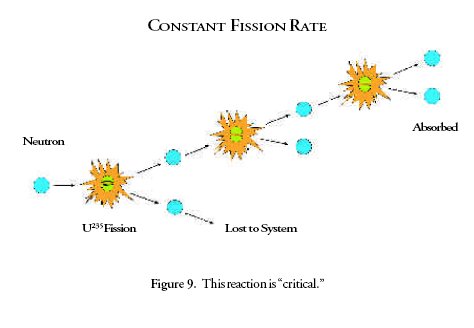
If the reaction proceeds too quickly, the excess neutrons need to
be removed. This is done by neutron-absorbing control rods.
The rods are lowered into the uranium.
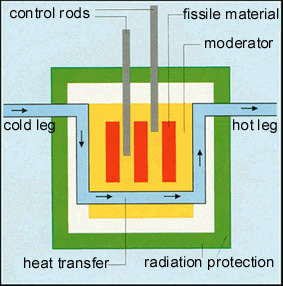
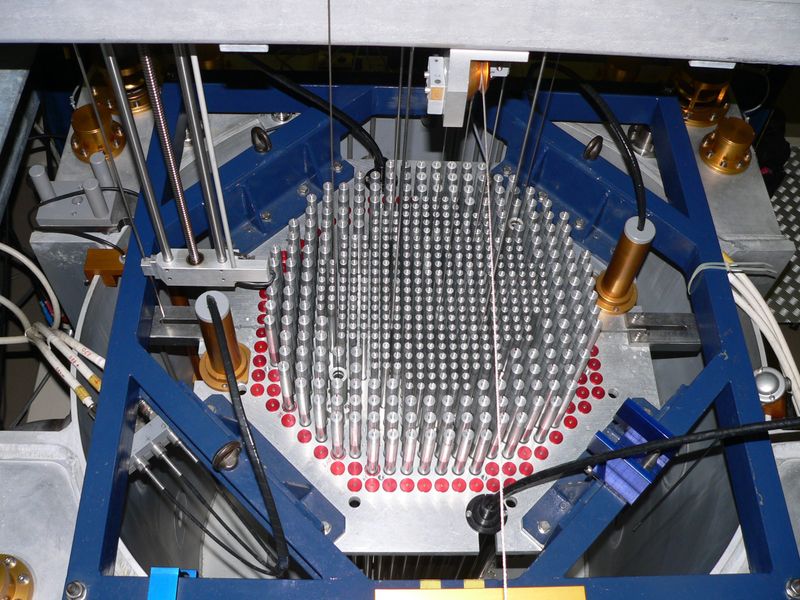

Two things can go wrong:
In Chernobyl and Three-Mile-Island, the coolant leaked and so there was
nothing to remove the heat from the reactor. The reactor got too
hot and the uranium melted, releasing radiation.
This is called a "meltdown."
The control rods could fail and there would be nothing to slow down the
nuclear reaction. The uranium would get really hot and blow up,
releasing radiation.
The reactor could go critical before the coolant and moderator can respond.
This happened to the SL-1 reactor in 1960.
One design that addresses these problems is the "Pebble bed" reactor.
Pebble bed reactor
As the temperature increases, the reaction rate goes down.
If the coolant is lost, the uranium still can't overheat.
There's still enough ambient cooling to take the heat away.
There are no materials in the reactor that can become radioactive.
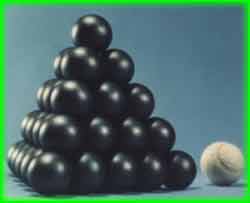
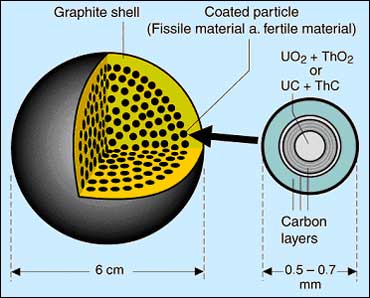
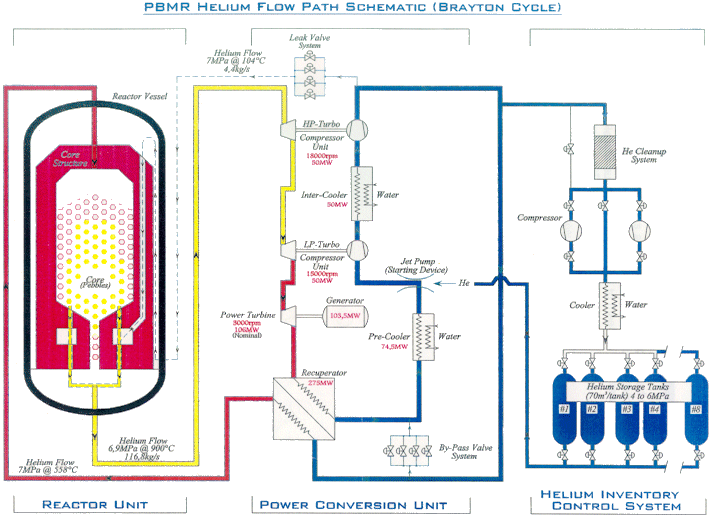
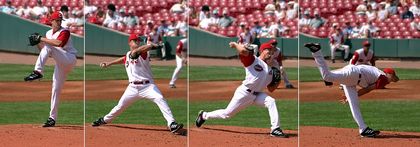


Radioactive waste:
Elements produced by nuclear fission
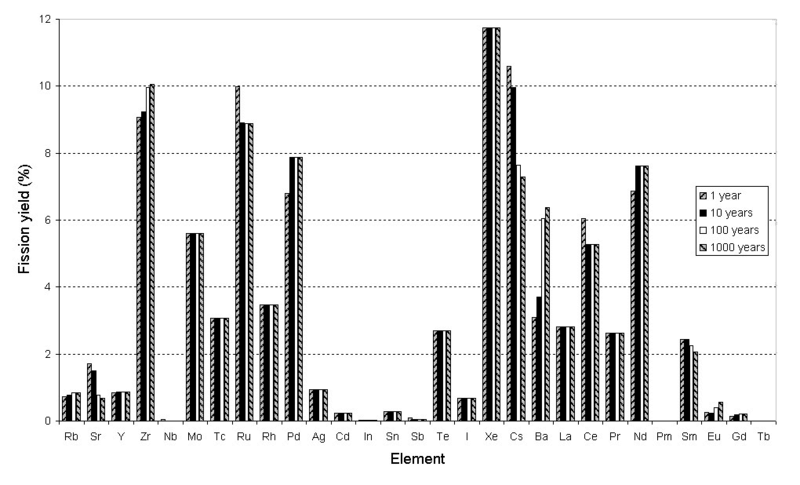
Evolution of fission products
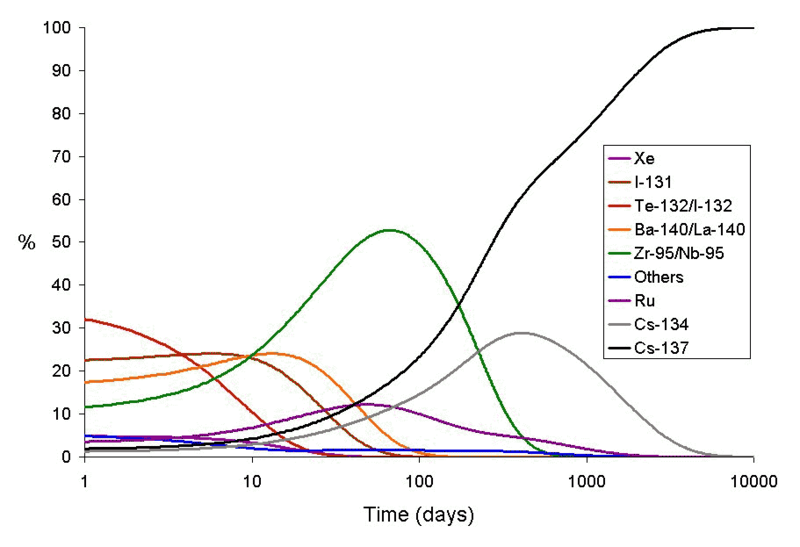
Radioactivity at Chernobyl

n
Technetium, the villain
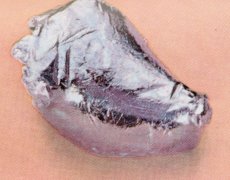
Suppose you had 4 radioactive elements: one with a half-life
of 1 day, one with a half-life of 10 years, one with a half-life of 100,000
years, and another with a half-life of 1 billion years. Which of them poses
the biggest challenge as far as radioactive waste is concerned?
![]()
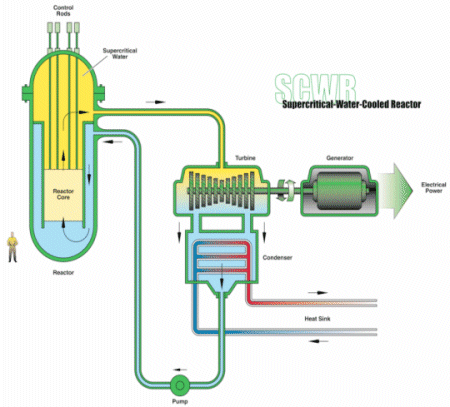

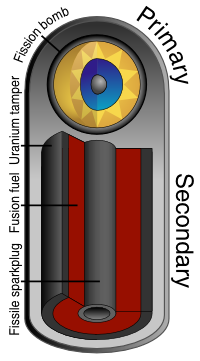
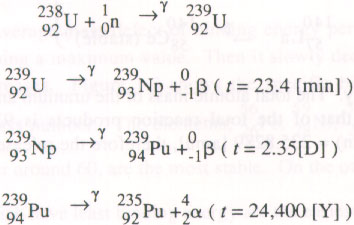
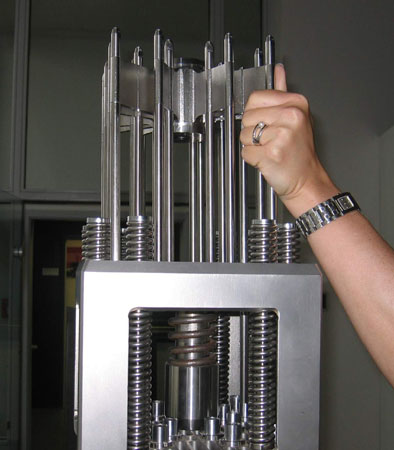

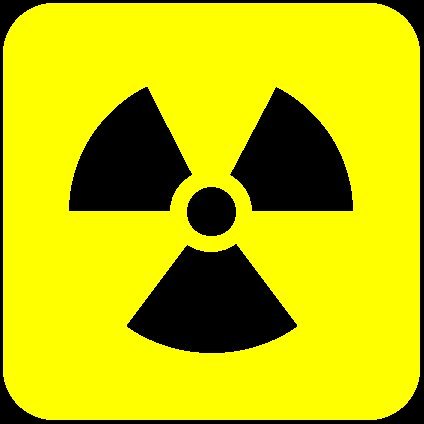
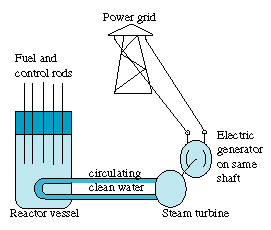

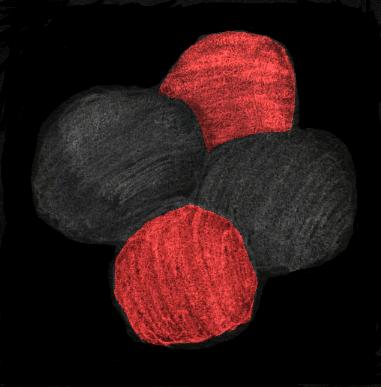
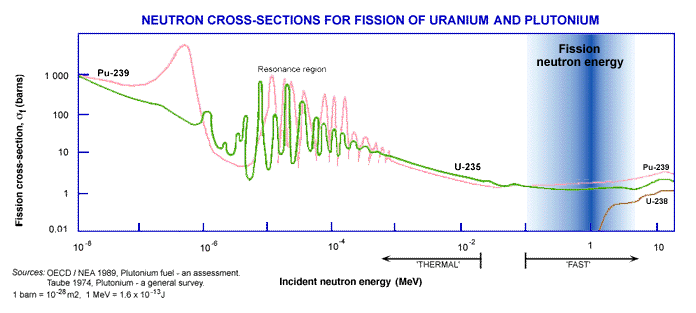
![]()
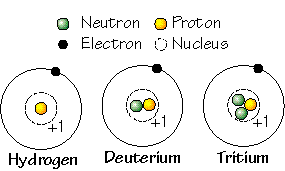
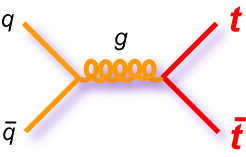
Manhattan project.
Pakistan exports centrifuges
North Korea
Libya
North Korea exports missiles
Iran
Syria
Pakistan
"We were perfectly sure it would work." - Hans Bethe
Picture of a kiloton
Chain reaction
BATSE satellite

Uranium-235 and plutonium-239 split up when hit by a neutron, releasing
2 or 3 new neutrons and a lot of energy.



Critical mass:
Atoms are mostly empty space.




Assembly


Uranium bomb

Uranium-235 and uranium-238.
Natural uranium is composed of two nuclear isotopes: 1 percent uranium-235
and 99 percent uranium-238.
Uranium-235: 92 protons and 143 neutrons.
Uranium-238: 92 protons and 146 neutrons.
Plutonium-239: 94 protons and 145 neutrons.
Plutonium-240: 94 protons and 146 neutrons.
Uranium-235 splits when struck by a neutron while
Uranium-238 does not. uranium-238 instead captures the neutron and
turns into plutonium-239, which can also be used to construct a
nuclear explosive.

Uranium-235 is not easy to come by.
How do you extract the uranium-235 from
uranium-238? There are three methods.
Calutron (mass spectrometer)
A magnetic field exerts a sideways force on a moving charged particle,
causing its path to curve.
The magnetic force is proportional to the charge of the particle.
The inertia is proportional to the mass of the particle.


Magnetic force:

Force = charge * velocity * magnetic_field / speed_of_light
Two wires carrying a current attract each other by the magnetic force.


Uranium-235 and uranium-238 have the same charge, but uranium-238 has more
mass and thus more inertia. Thus the uranium-235 is curved more than the
uranium-238.
Gas centrifuge separation.
Uranium hexafluoride is a gas.
Buoyancy causes lighter gass to rise and denser gas to fall.
A centrifuge is a way of creating a high-gravity environment.
Pakistan stole blueprints for gas centrifuges and used them to purify
uranium.

Gas diffusion.
Lighter gas particles move faster.


Plutonium-239:
In a nuclear reactor, uranium-235 fissions and produces neutrons.
These neutrons are captured by uranium-238 nuclei, which then turn into
plutonium-239 and plutonium-240. Plutonium-239 can be used as a nuclear
explosive. Plutonium-239 is also easy to separate from the uranium because they
have different chemical properties, such as their vaporization temperatures.
Uranium-235: 92 protons and 143 neutrons.
Uranium-238: 92 protons and 146 neutrons.
Plutonium-239: 94 protons and 145 neutrons.
Plutonium-240: 94 protons and 146 neutrons.

Plutonium bomb:
How to generate plutonium:
In a nuclear reactor with uranium-235 and uranium-238, the uranium-235
is fissioned and the neutrons that are generated are captured by the
uranium-238, converting it to plutonium-239 plus a small amount
of plutonium-240. Plutonium-239 is similar to uranium-235
in that both can cause a chain reaction explosion.
If you try to use plutonium-239 to make a bomb, the plutonium-240 contaminant
is highly radioactive and produces lots of neutrons, which speed up the
detonation of plutonium-239. The speedup is significant enough so as to require
that the plutonium-239 be assembled much more quickly than uranium-235. This
makes plutonium-239 much more difficult to detonate. The North Koreans are
working on this method and have so far not succeeded.




Development of nuclear weapons
Nuclear-armed states:
Fission Fusion
U.S.A. 1945 1954
Germany 1945 Attempted. Did not succeed.
Russia 1949 1953
Britain 1952 1957
France 1960 1968
China 1964 1967
Israel 1979 ? Undeclared
India 1974 Uranium
Pakistan 1990 Centrifuge enrichment of Uranium. Tested in 1998.
Built centrifuges from stolen designs.
North Korea 2006 (Plutonium). Detonation attempt fizzled
Also acquired centrifuges from Pakistan
North Korea Attempting to purify Uranium with centrifuges
South Africa 1980 Dismantled in 1991
Iran 1981 (Plutonium) 1981 Osirak reactor. Destroyed by Israel
Iraq 1993 Magnetic enrichment of Uranium. Dismantled after
Gulf War 1
Iraq 2003 Alleged by the United States. Proved to be untrue.
Iran 2009? Centrifuge enrichment of Uranium.
Will take a few years.
Libya -- Centrifuge enrichment of Uranium. Not completed.
Dismantled before completion.
Cooperated in the investigation that identified
Pakistan as the proliferator of Centrifuge design.
Quite a few states possess nuclear reactors for energy generation, but have
declined to develop nuclear weapons. These are Japan, Canada, Brasil,
Argentina, Sweden, Germany, Poland, Australia.
North Korea has intercontinental missiles, which they have sold to
Pakistan.
Hydrogen bomb:
Hydrogen has to be compressed to heat it up to the temperature where it
can fuse, releasing energy. The energy to compress the hydrogen comes from
the x-rays produced by a fission bomb.


Nuclear reactor
In an automobile engine, gasoline burns, gets hot and expands and
pushes on the piston, which delivers power to the wheels.

A coal-fired power plant is similar. Coal burns and turns water into steam,
which drives an electrical generator.

A nuclear reactor is similar to a coal reactor. The only difference is that
it's a nuclear reaction that's heating the water rather than coal.
What could go wrong?
If the uranium has less than critical mass, too many neutrons escape
and the reaction dies out.
If the uranium has more than a critical mass, the chain reaction snowballs
and the material blows up in a spectacular explosion.
The reaction needs to proceed at just the right rate. For every
nucleus that splits, exactly one neutron needs to hit another nucleus.

If the reaction proceeds too quickly, the excess neutrons need to
be removed. This is done by neutron-absorbing control rods.
The rods are lowered into the uranium.



Two things can go wrong:
In Chernobyl and Three-Mile-Island, the coolant leaked and so there was
nothing to remove the heat from the reactor. The reactor got too
hot and the uranium melted, releasing radiation.
This is called a "meltdown."
The control rods could fail and there would be nothing to slow down the
nuclear reaction. The uranium would get really hot and blow up,
releasing radiation.
The reactor could go critical before the coolant and moderator can respond.
This happened to the SL-1 reactor in 1960.
One design that addresses these problems is the "Pebble bed" reactor.
Pebble bed reactor
As the temperature increases, the reaction rate goes down.
If the coolant is lost, the uranium still can't overheat.
There's still enough ambient cooling to take the heat away.
There are no materials in the reactor that can become radioactive.






Radioactive waste:
Elements produced by nuclear fission

Evolution of fission products

Radioactivity at Chernobyl

n
Technetium, the villain

Suppose you had 4 radioactive elements: one with a half-life
of 1 day, one with a half-life of 10 years, one with a half-life of 100,000
years, and another with a half-life of 1 billion years. Which of them poses
the biggest challenge as far as radioactive waste is concerned?
![]()











![]()


Manhattan project.
Pakistan exports centrifuges
North Korea
Libya
North Korea exports missiles
Iran
Syria
Pakistan
"We were perfectly sure it would work." - Hans Bethe
Picture of a kiloton
Chain reaction
BATSE satellite



Critical mass:
Atoms are mostly empty space.




Assembly


Uranium bomb

Uranium-235 and uranium-238.
Natural uranium is composed of two nuclear isotopes: 1 percent uranium-235
and 99 percent uranium-238.
Uranium-235: 92 protons and 143 neutrons.
Uranium-238: 92 protons and 146 neutrons.
Plutonium-239: 94 protons and 145 neutrons.
Plutonium-240: 94 protons and 146 neutrons.
Uranium-235 splits when struck by a neutron while
Uranium-238 does not. uranium-238 instead captures the neutron and
turns into plutonium-239, which can also be used to construct a
nuclear explosive.

Uranium-235 is not easy to come by.
How do you extract the uranium-235 from
uranium-238? There are three methods.
Calutron (mass spectrometer)
A magnetic field exerts a sideways force on a moving charged particle,
causing its path to curve.
The magnetic force is proportional to the charge of the particle.
The inertia is proportional to the mass of the particle.


Magnetic force:

Force = charge * velocity * magnetic_field / speed_of_light
Two wires carrying a current attract each other by the magnetic force.


Uranium-235 and uranium-238 have the same charge, but uranium-238 has more
mass and thus more inertia. Thus the uranium-235 is curved more than the
uranium-238.
Gas centrifuge separation.
Uranium hexafluoride is a gas.
Buoyancy causes lighter gass to rise and denser gas to fall.
A centrifuge is a way of creating a high-gravity environment.
Pakistan stole blueprints for gas centrifuges and used them to purify
uranium.

Gas diffusion.
Lighter gas particles move faster.


Plutonium-239:
In a nuclear reactor, uranium-235 fissions and produces neutrons.
These neutrons are captured by uranium-238 nuclei, which then turn into
plutonium-239 and plutonium-240. Plutonium-239 can be used as a nuclear
explosive. Plutonium-239 is also easy to separate from the uranium because they
have different chemical properties, such as their vaporization temperatures.
Uranium-235: 92 protons and 143 neutrons.
Uranium-238: 92 protons and 146 neutrons.
Plutonium-239: 94 protons and 145 neutrons.
Plutonium-240: 94 protons and 146 neutrons.

Plutonium bomb:
How to generate plutonium:
In a nuclear reactor with uranium-235 and uranium-238, the uranium-235
is fissioned and the neutrons that are generated are captured by the
uranium-238, converting it to plutonium-239 plus a small amount
of plutonium-240. Plutonium-239 is similar to uranium-235
in that both can cause a chain reaction explosion.
If you try to use plutonium-239 to make a bomb, the plutonium-240 contaminant
is highly radioactive and produces lots of neutrons, which speed up the
detonation of plutonium-239. The speedup is significant enough so as to require
that the plutonium-239 be assembled much more quickly than uranium-235. This
makes plutonium-239 much more difficult to detonate. The North Koreans are
working on this method and have so far not succeeded.




Development of nuclear weapons
Nuclear-armed states:
Fission Fusion
U.S.A. 1945 1954
Germany 1945 Attempted. Did not succeed.
Russia 1949 1953
Britain 1952 1957
France 1960 1968
China 1964 1967
Israel 1979 ? Undeclared
India 1974 Uranium
Pakistan 1990 Centrifuge enrichment of Uranium. Tested in 1998.
Built centrifuges from stolen designs.
North Korea 2006 (Plutonium). Detonation attempt fizzled
Also acquired centrifuges from Pakistan
North Korea Attempting to purify Uranium with centrifuges
South Africa 1980 Dismantled in 1991
Iran 1981 (Plutonium) 1981 Osirak reactor. Destroyed by Israel
Iraq 1993 Magnetic enrichment of Uranium. Dismantled after
Gulf War 1
Iraq 2003 Alleged by the United States. Proved to be untrue.
Iran 2009? Centrifuge enrichment of Uranium.
Will take a few years.
Libya -- Centrifuge enrichment of Uranium. Not completed.
Dismantled before completion.
Cooperated in the investigation that identified
Pakistan as the proliferator of Centrifuge design.
Quite a few states possess nuclear reactors for energy generation, but have
declined to develop nuclear weapons. These are Japan, Canada, Brasil,
Argentina, Sweden, Germany, Poland, Australia.
North Korea has intercontinental missiles, which they have sold to
Pakistan.
Hydrogen bomb:
Hydrogen has to be compressed to heat it up to the temperature where it
can fuse, releasing energy. The energy to compress the hydrogen comes from
the x-rays produced by a fission bomb.


Nuclear reactor
In an automobile engine, gasoline burns, gets hot and expands and
pushes on the piston, which delivers power to the wheels.

A coal-fired power plant is similar. Coal burns and turns water into steam,
which drives an electrical generator.

A nuclear reactor is similar to a coal reactor. The only difference is that
it's a nuclear reaction that's heating the water rather than coal.
What could go wrong?
If the uranium has less than critical mass, too many neutrons escape
and the reaction dies out.
If the uranium has more than a critical mass, the chain reaction snowballs
and the material blows up in a spectacular explosion.
The reaction needs to proceed at just the right rate. For every
nucleus that splits, exactly one neutron needs to hit another nucleus.

If the reaction proceeds too quickly, the excess neutrons need to
be removed. This is done by neutron-absorbing control rods.
The rods are lowered into the uranium.



Two things can go wrong:
In Chernobyl and Three-Mile-Island, the coolant leaked and so there was
nothing to remove the heat from the reactor. The reactor got too
hot and the uranium melted, releasing radiation.
This is called a "meltdown."
The control rods could fail and there would be nothing to slow down the
nuclear reaction. The uranium would get really hot and blow up,
releasing radiation.
The reactor could go critical before the coolant and moderator can respond.
This happened to the SL-1 reactor in 1960.
One design that addresses these problems is the "Pebble bed" reactor.
Pebble bed reactor
As the temperature increases, the reaction rate goes down.
If the coolant is lost, the uranium still can't overheat.
There's still enough ambient cooling to take the heat away.
There are no materials in the reactor that can become radioactive.






Radioactive waste:
Elements produced by nuclear fission

Evolution of fission products

Radioactivity at Chernobyl

n
Technetium, the villain

Suppose you had 4 radioactive elements: one with a half-life
of 1 day, one with a half-life of 10 years, one with a half-life of 100,000
years, and another with a half-life of 1 billion years. Which of them poses
the biggest challenge as far as radioactive waste is concerned?
![]()











![]()


Manhattan project.
Pakistan exports centrifuges
North Korea
Libya
North Korea exports missiles
Iran
Syria
Pakistan
"We were perfectly sure it would work." - Hans Bethe
Picture of a kiloton
Chain reaction
BATSE satellite




Assembly


Uranium bomb

Uranium-235 and uranium-238.
Natural uranium is composed of two nuclear isotopes: 1 percent uranium-235
and 99 percent uranium-238.
Uranium-235: 92 protons and 143 neutrons.
Uranium-238: 92 protons and 146 neutrons.
Plutonium-239: 94 protons and 145 neutrons.
Plutonium-240: 94 protons and 146 neutrons.
Uranium-235 splits when struck by a neutron while
Uranium-238 does not. uranium-238 instead captures the neutron and
turns into plutonium-239, which can also be used to construct a
nuclear explosive.

Uranium-235 is not easy to come by.
How do you extract the uranium-235 from
uranium-238? There are three methods.
Calutron (mass spectrometer)
A magnetic field exerts a sideways force on a moving charged particle,
causing its path to curve.
The magnetic force is proportional to the charge of the particle.
The inertia is proportional to the mass of the particle.


Magnetic force:

Force = charge * velocity * magnetic_field / speed_of_light
Two wires carrying a current attract each other by the magnetic force.


Uranium-235 and uranium-238 have the same charge, but uranium-238 has more
mass and thus more inertia. Thus the uranium-235 is curved more than the
uranium-238.
Gas centrifuge separation.
Uranium hexafluoride is a gas.
Buoyancy causes lighter gass to rise and denser gas to fall.
A centrifuge is a way of creating a high-gravity environment.
Pakistan stole blueprints for gas centrifuges and used them to purify
uranium.

Gas diffusion.
Lighter gas particles move faster.


Plutonium-239:
In a nuclear reactor, uranium-235 fissions and produces neutrons.
These neutrons are captured by uranium-238 nuclei, which then turn into
plutonium-239 and plutonium-240. Plutonium-239 can be used as a nuclear
explosive. Plutonium-239 is also easy to separate from the uranium because they
have different chemical properties, such as their vaporization temperatures.
Uranium-235: 92 protons and 143 neutrons.
Uranium-238: 92 protons and 146 neutrons.
Plutonium-239: 94 protons and 145 neutrons.
Plutonium-240: 94 protons and 146 neutrons.

Plutonium bomb:
How to generate plutonium:
In a nuclear reactor with uranium-235 and uranium-238, the uranium-235
is fissioned and the neutrons that are generated are captured by the
uranium-238, converting it to plutonium-239 plus a small amount
of plutonium-240. Plutonium-239 is similar to uranium-235
in that both can cause a chain reaction explosion.
If you try to use plutonium-239 to make a bomb, the plutonium-240 contaminant
is highly radioactive and produces lots of neutrons, which speed up the
detonation of plutonium-239. The speedup is significant enough so as to require
that the plutonium-239 be assembled much more quickly than uranium-235. This
makes plutonium-239 much more difficult to detonate. The North Koreans are
working on this method and have so far not succeeded.




Development of nuclear weapons
Nuclear-armed states:
Fission Fusion
U.S.A. 1945 1954
Germany 1945 Attempted. Did not succeed.
Russia 1949 1953
Britain 1952 1957
France 1960 1968
China 1964 1967
Israel 1979 ? Undeclared
India 1974 Uranium
Pakistan 1990 Centrifuge enrichment of Uranium. Tested in 1998.
Built centrifuges from stolen designs.
North Korea 2006 (Plutonium). Detonation attempt fizzled
Also acquired centrifuges from Pakistan
North Korea Attempting to purify Uranium with centrifuges
South Africa 1980 Dismantled in 1991
Iran 1981 (Plutonium) 1981 Osirak reactor. Destroyed by Israel
Iraq 1993 Magnetic enrichment of Uranium. Dismantled after
Gulf War 1
Iraq 2003 Alleged by the United States. Proved to be untrue.
Iran 2009? Centrifuge enrichment of Uranium.
Will take a few years.
Libya -- Centrifuge enrichment of Uranium. Not completed.
Dismantled before completion.
Cooperated in the investigation that identified
Pakistan as the proliferator of Centrifuge design.
Quite a few states possess nuclear reactors for energy generation, but have
declined to develop nuclear weapons. These are Japan, Canada, Brasil,
Argentina, Sweden, Germany, Poland, Australia.
North Korea has intercontinental missiles, which they have sold to
Pakistan.
Hydrogen bomb:
Hydrogen has to be compressed to heat it up to the temperature where it
can fuse, releasing energy. The energy to compress the hydrogen comes from
the x-rays produced by a fission bomb.


Nuclear reactor
In an automobile engine, gasoline burns, gets hot and expands and
pushes on the piston, which delivers power to the wheels.

A coal-fired power plant is similar. Coal burns and turns water into steam,
which drives an electrical generator.

A nuclear reactor is similar to a coal reactor. The only difference is that
it's a nuclear reaction that's heating the water rather than coal.
What could go wrong?
If the uranium has less than critical mass, too many neutrons escape
and the reaction dies out.
If the uranium has more than a critical mass, the chain reaction snowballs
and the material blows up in a spectacular explosion.
The reaction needs to proceed at just the right rate. For every
nucleus that splits, exactly one neutron needs to hit another nucleus.

If the reaction proceeds too quickly, the excess neutrons need to
be removed. This is done by neutron-absorbing control rods.
The rods are lowered into the uranium.



Two things can go wrong:
In Chernobyl and Three-Mile-Island, the coolant leaked and so there was
nothing to remove the heat from the reactor. The reactor got too
hot and the uranium melted, releasing radiation.
This is called a "meltdown."
The control rods could fail and there would be nothing to slow down the
nuclear reaction. The uranium would get really hot and blow up,
releasing radiation.
The reactor could go critical before the coolant and moderator can respond.
This happened to the SL-1 reactor in 1960.
One design that addresses these problems is the "Pebble bed" reactor.
Pebble bed reactor
As the temperature increases, the reaction rate goes down.
If the coolant is lost, the uranium still can't overheat.
There's still enough ambient cooling to take the heat away.
There are no materials in the reactor that can become radioactive.






Radioactive waste:
Elements produced by nuclear fission

Evolution of fission products

Radioactivity at Chernobyl

n
Technetium, the villain

Suppose you had 4 radioactive elements: one with a half-life
of 1 day, one with a half-life of 10 years, one with a half-life of 100,000
years, and another with a half-life of 1 billion years. Which of them poses
the biggest challenge as far as radioactive waste is concerned?
![]()











![]()


Manhattan project.
Pakistan exports centrifuges
North Korea
Libya
North Korea exports missiles
Iran
Syria
Pakistan
"We were perfectly sure it would work." - Hans Bethe
Picture of a kiloton
Chain reaction
BATSE satellite


Uranium bomb

Uranium-235 and uranium-238.
Natural uranium is composed of two nuclear isotopes: 1 percent uranium-235
and 99 percent uranium-238.
Uranium-235: 92 protons and 143 neutrons.
Uranium-238: 92 protons and 146 neutrons.
Plutonium-239: 94 protons and 145 neutrons.
Plutonium-240: 94 protons and 146 neutrons.
Uranium-235 splits when struck by a neutron while
Uranium-238 does not. uranium-238 instead captures the neutron and
turns into plutonium-239, which can also be used to construct a
nuclear explosive.

Uranium-235 is not easy to come by.
How do you extract the uranium-235 from
uranium-238? There are three methods.
Calutron (mass spectrometer)
A magnetic field exerts a sideways force on a moving charged particle,
causing its path to curve.
The magnetic force is proportional to the charge of the particle.
The inertia is proportional to the mass of the particle.


Magnetic force:

Force = charge * velocity * magnetic_field / speed_of_light
Two wires carrying a current attract each other by the magnetic force.


Uranium-235 and uranium-238 have the same charge, but uranium-238 has more
mass and thus more inertia. Thus the uranium-235 is curved more than the
uranium-238.
Gas centrifuge separation.
Uranium hexafluoride is a gas.
Buoyancy causes lighter gass to rise and denser gas to fall.
A centrifuge is a way of creating a high-gravity environment.
Pakistan stole blueprints for gas centrifuges and used them to purify
uranium.

Gas diffusion.
Lighter gas particles move faster.


Plutonium-239:
In a nuclear reactor, uranium-235 fissions and produces neutrons.
These neutrons are captured by uranium-238 nuclei, which then turn into
plutonium-239 and plutonium-240. Plutonium-239 can be used as a nuclear
explosive. Plutonium-239 is also easy to separate from the uranium because they
have different chemical properties, such as their vaporization temperatures.
Uranium-235: 92 protons and 143 neutrons.
Uranium-238: 92 protons and 146 neutrons.
Plutonium-239: 94 protons and 145 neutrons.
Plutonium-240: 94 protons and 146 neutrons.

Plutonium bomb:
How to generate plutonium:
In a nuclear reactor with uranium-235 and uranium-238, the uranium-235
is fissioned and the neutrons that are generated are captured by the
uranium-238, converting it to plutonium-239 plus a small amount
of plutonium-240. Plutonium-239 is similar to uranium-235
in that both can cause a chain reaction explosion.
If you try to use plutonium-239 to make a bomb, the plutonium-240 contaminant
is highly radioactive and produces lots of neutrons, which speed up the
detonation of plutonium-239. The speedup is significant enough so as to require
that the plutonium-239 be assembled much more quickly than uranium-235. This
makes plutonium-239 much more difficult to detonate. The North Koreans are
working on this method and have so far not succeeded.




Development of nuclear weapons
Nuclear-armed states:
Fission Fusion
U.S.A. 1945 1954
Germany 1945 Attempted. Did not succeed.
Russia 1949 1953
Britain 1952 1957
France 1960 1968
China 1964 1967
Israel 1979 ? Undeclared
India 1974 Uranium
Pakistan 1990 Centrifuge enrichment of Uranium. Tested in 1998.
Built centrifuges from stolen designs.
North Korea 2006 (Plutonium). Detonation attempt fizzled
Also acquired centrifuges from Pakistan
North Korea Attempting to purify Uranium with centrifuges
South Africa 1980 Dismantled in 1991
Iran 1981 (Plutonium) 1981 Osirak reactor. Destroyed by Israel
Iraq 1993 Magnetic enrichment of Uranium. Dismantled after
Gulf War 1
Iraq 2003 Alleged by the United States. Proved to be untrue.
Iran 2009? Centrifuge enrichment of Uranium.
Will take a few years.
Libya -- Centrifuge enrichment of Uranium. Not completed.
Dismantled before completion.
Cooperated in the investigation that identified
Pakistan as the proliferator of Centrifuge design.
Quite a few states possess nuclear reactors for energy generation, but have
declined to develop nuclear weapons. These are Japan, Canada, Brasil,
Argentina, Sweden, Germany, Poland, Australia.
North Korea has intercontinental missiles, which they have sold to
Pakistan.
Hydrogen bomb:
Hydrogen has to be compressed to heat it up to the temperature where it
can fuse, releasing energy. The energy to compress the hydrogen comes from
the x-rays produced by a fission bomb.


Nuclear reactor
In an automobile engine, gasoline burns, gets hot and expands and
pushes on the piston, which delivers power to the wheels.

A coal-fired power plant is similar. Coal burns and turns water into steam,
which drives an electrical generator.

A nuclear reactor is similar to a coal reactor. The only difference is that
it's a nuclear reaction that's heating the water rather than coal.
What could go wrong?
If the uranium has less than critical mass, too many neutrons escape
and the reaction dies out.
If the uranium has more than a critical mass, the chain reaction snowballs
and the material blows up in a spectacular explosion.
The reaction needs to proceed at just the right rate. For every
nucleus that splits, exactly one neutron needs to hit another nucleus.

If the reaction proceeds too quickly, the excess neutrons need to
be removed. This is done by neutron-absorbing control rods.
The rods are lowered into the uranium.



Two things can go wrong:
In Chernobyl and Three-Mile-Island, the coolant leaked and so there was
nothing to remove the heat from the reactor. The reactor got too
hot and the uranium melted, releasing radiation.
This is called a "meltdown."
The control rods could fail and there would be nothing to slow down the
nuclear reaction. The uranium would get really hot and blow up,
releasing radiation.
The reactor could go critical before the coolant and moderator can respond.
This happened to the SL-1 reactor in 1960.
One design that addresses these problems is the "Pebble bed" reactor.
Pebble bed reactor
As the temperature increases, the reaction rate goes down.
If the coolant is lost, the uranium still can't overheat.
There's still enough ambient cooling to take the heat away.
There are no materials in the reactor that can become radioactive.






Radioactive waste:
Elements produced by nuclear fission

Evolution of fission products

Radioactivity at Chernobyl

n
Technetium, the villain

Suppose you had 4 radioactive elements: one with a half-life
of 1 day, one with a half-life of 10 years, one with a half-life of 100,000
years, and another with a half-life of 1 billion years. Which of them poses
the biggest challenge as far as radioactive waste is concerned?
![]()











![]()


Manhattan project.
Pakistan exports centrifuges
North Korea
Libya
North Korea exports missiles
Iran
Syria
Pakistan
"We were perfectly sure it would work." - Hans Bethe
Picture of a kiloton
Chain reaction
BATSE satellite

Uranium-235 and uranium-238.
Natural uranium is composed of two nuclear isotopes: 1 percent uranium-235
and 99 percent uranium-238.
Uranium-235: 92 protons and 143 neutrons.
Uranium-238: 92 protons and 146 neutrons.
Plutonium-239: 94 protons and 145 neutrons.
Plutonium-240: 94 protons and 146 neutrons.
Uranium-235: 92 protons and 143 neutrons.
Uranium-238: 92 protons and 146 neutrons.
Plutonium-239: 94 protons and 145 neutrons.
Plutonium-240: 94 protons and 146 neutrons.
Uranium-235 splits when struck by a neutron while
Uranium-238 does not. uranium-238 instead captures the neutron and
turns into plutonium-239, which can also be used to construct a
nuclear explosive.

Uranium-235 is not easy to come by.
How do you extract the uranium-235 from
uranium-238? There are three methods.
Calutron (mass spectrometer)
A magnetic field exerts a sideways force on a moving charged particle,
causing its path to curve.
The magnetic force is proportional to the charge of the particle.
The inertia is proportional to the mass of the particle.


Magnetic force:

Force = charge * velocity * magnetic_field / speed_of_light
Two wires carrying a current attract each other by the magnetic force.


Uranium-235 and uranium-238 have the same charge, but uranium-238 has more
mass and thus more inertia. Thus the uranium-235 is curved more than the
uranium-238.
Gas centrifuge separation.
Uranium hexafluoride is a gas.
Buoyancy causes lighter gass to rise and denser gas to fall.
A centrifuge is a way of creating a high-gravity environment.
Pakistan stole blueprints for gas centrifuges and used them to purify
uranium.

Gas diffusion.
Lighter gas particles move faster.


Plutonium-239:
In a nuclear reactor, uranium-235 fissions and produces neutrons.
These neutrons are captured by uranium-238 nuclei, which then turn into
plutonium-239 and plutonium-240. Plutonium-239 can be used as a nuclear
explosive. Plutonium-239 is also easy to separate from the uranium because they
have different chemical properties, such as their vaporization temperatures.
Uranium-235: 92 protons and 143 neutrons.
Uranium-238: 92 protons and 146 neutrons.
Plutonium-239: 94 protons and 145 neutrons.
Plutonium-240: 94 protons and 146 neutrons.

Plutonium bomb:
How to generate plutonium:
In a nuclear reactor with uranium-235 and uranium-238, the uranium-235
is fissioned and the neutrons that are generated are captured by the
uranium-238, converting it to plutonium-239 plus a small amount
of plutonium-240. Plutonium-239 is similar to uranium-235
in that both can cause a chain reaction explosion.
If you try to use plutonium-239 to make a bomb, the plutonium-240 contaminant
is highly radioactive and produces lots of neutrons, which speed up the
detonation of plutonium-239. The speedup is significant enough so as to require
that the plutonium-239 be assembled much more quickly than uranium-235. This
makes plutonium-239 much more difficult to detonate. The North Koreans are
working on this method and have so far not succeeded.




Development of nuclear weapons
Nuclear-armed states:
Fission Fusion
U.S.A. 1945 1954
Germany 1945 Attempted. Did not succeed.
Russia 1949 1953
Britain 1952 1957
France 1960 1968
China 1964 1967
Israel 1979 ? Undeclared
India 1974 Uranium
Pakistan 1990 Centrifuge enrichment of Uranium. Tested in 1998.
Built centrifuges from stolen designs.
North Korea 2006 (Plutonium). Detonation attempt fizzled
Also acquired centrifuges from Pakistan
North Korea Attempting to purify Uranium with centrifuges
South Africa 1980 Dismantled in 1991
Iran 1981 (Plutonium) 1981 Osirak reactor. Destroyed by Israel
Iraq 1993 Magnetic enrichment of Uranium. Dismantled after
Gulf War 1
Iraq 2003 Alleged by the United States. Proved to be untrue.
Iran 2009? Centrifuge enrichment of Uranium.
Will take a few years.
Libya -- Centrifuge enrichment of Uranium. Not completed.
Dismantled before completion.
Cooperated in the investigation that identified
Pakistan as the proliferator of Centrifuge design.
Quite a few states possess nuclear reactors for energy generation, but have
declined to develop nuclear weapons. These are Japan, Canada, Brasil,
Argentina, Sweden, Germany, Poland, Australia.
North Korea has intercontinental missiles, which they have sold to
Pakistan.
Hydrogen bomb:
Hydrogen has to be compressed to heat it up to the temperature where it
can fuse, releasing energy. The energy to compress the hydrogen comes from
the x-rays produced by a fission bomb.


Nuclear reactor
In an automobile engine, gasoline burns, gets hot and expands and
pushes on the piston, which delivers power to the wheels.

A coal-fired power plant is similar. Coal burns and turns water into steam,
which drives an electrical generator.

A nuclear reactor is similar to a coal reactor. The only difference is that
it's a nuclear reaction that's heating the water rather than coal.
What could go wrong?
If the uranium has less than critical mass, too many neutrons escape
and the reaction dies out.
If the uranium has more than a critical mass, the chain reaction snowballs
and the material blows up in a spectacular explosion.
The reaction needs to proceed at just the right rate. For every
nucleus that splits, exactly one neutron needs to hit another nucleus.

If the reaction proceeds too quickly, the excess neutrons need to
be removed. This is done by neutron-absorbing control rods.
The rods are lowered into the uranium.



Two things can go wrong:
In Chernobyl and Three-Mile-Island, the coolant leaked and so there was
nothing to remove the heat from the reactor. The reactor got too
hot and the uranium melted, releasing radiation.
This is called a "meltdown."
The control rods could fail and there would be nothing to slow down the
nuclear reaction. The uranium would get really hot and blow up,
releasing radiation.
The reactor could go critical before the coolant and moderator can respond.
This happened to the SL-1 reactor in 1960.
One design that addresses these problems is the "Pebble bed" reactor.
Pebble bed reactor
As the temperature increases, the reaction rate goes down.
If the coolant is lost, the uranium still can't overheat.
There's still enough ambient cooling to take the heat away.
There are no materials in the reactor that can become radioactive.






Radioactive waste:
Elements produced by nuclear fission

Evolution of fission products

Radioactivity at Chernobyl

n
Technetium, the villain

Suppose you had 4 radioactive elements: one with a half-life
of 1 day, one with a half-life of 10 years, one with a half-life of 100,000
years, and another with a half-life of 1 billion years. Which of them poses
the biggest challenge as far as radioactive waste is concerned?
![]()











![]()


Manhattan project.
Pakistan exports centrifuges
North Korea
Libya
North Korea exports missiles
Iran
Syria
Pakistan
"We were perfectly sure it would work." - Hans Bethe
Picture of a kiloton
Chain reaction
BATSE satellite
uranium-238? There are three methods.
Calutron (mass spectrometer)
A magnetic field exerts a sideways force on a moving charged particle,
causing its path to curve.
The magnetic force is proportional to the charge of the particle.
The inertia is proportional to the mass of the particle.


Magnetic force:

Force = charge * velocity * magnetic_field / speed_of_light
Two wires carrying a current attract each other by the magnetic force.


Uranium-235 and uranium-238 have the same charge, but uranium-238 has more
mass and thus more inertia. Thus the uranium-235 is curved more than the
uranium-238.
Gas centrifuge separation.
Uranium hexafluoride is a gas.
Buoyancy causes lighter gass to rise and denser gas to fall.
A centrifuge is a way of creating a high-gravity environment.
Pakistan stole blueprints for gas centrifuges and used them to purify
uranium.

Gas diffusion.
Lighter gas particles move faster.


Plutonium-239:
In a nuclear reactor, uranium-235 fissions and produces neutrons.
These neutrons are captured by uranium-238 nuclei, which then turn into
plutonium-239 and plutonium-240. Plutonium-239 can be used as a nuclear
explosive. Plutonium-239 is also easy to separate from the uranium because they
have different chemical properties, such as their vaporization temperatures.
Uranium-235: 92 protons and 143 neutrons.
Uranium-238: 92 protons and 146 neutrons.
Plutonium-239: 94 protons and 145 neutrons.
Plutonium-240: 94 protons and 146 neutrons.

Plutonium bomb:
How to generate plutonium:
In a nuclear reactor with uranium-235 and uranium-238, the uranium-235
is fissioned and the neutrons that are generated are captured by the
uranium-238, converting it to plutonium-239 plus a small amount
of plutonium-240. Plutonium-239 is similar to uranium-235
in that both can cause a chain reaction explosion.
If you try to use plutonium-239 to make a bomb, the plutonium-240 contaminant
is highly radioactive and produces lots of neutrons, which speed up the
detonation of plutonium-239. The speedup is significant enough so as to require
that the plutonium-239 be assembled much more quickly than uranium-235. This
makes plutonium-239 much more difficult to detonate. The North Koreans are
working on this method and have so far not succeeded.




Development of nuclear weapons
Nuclear-armed states:
Fission Fusion
U.S.A. 1945 1954
Germany 1945 Attempted. Did not succeed.
Russia 1949 1953
Britain 1952 1957
France 1960 1968
China 1964 1967
Israel 1979 ? Undeclared
India 1974 Uranium
Pakistan 1990 Centrifuge enrichment of Uranium. Tested in 1998.
Built centrifuges from stolen designs.
North Korea 2006 (Plutonium). Detonation attempt fizzled
Also acquired centrifuges from Pakistan
North Korea Attempting to purify Uranium with centrifuges
South Africa 1980 Dismantled in 1991
Iran 1981 (Plutonium) 1981 Osirak reactor. Destroyed by Israel
Iraq 1993 Magnetic enrichment of Uranium. Dismantled after
Gulf War 1
Iraq 2003 Alleged by the United States. Proved to be untrue.
Iran 2009? Centrifuge enrichment of Uranium.
Will take a few years.
Libya -- Centrifuge enrichment of Uranium. Not completed.
Dismantled before completion.
Cooperated in the investigation that identified
Pakistan as the proliferator of Centrifuge design.
Quite a few states possess nuclear reactors for energy generation, but have
declined to develop nuclear weapons. These are Japan, Canada, Brasil,
Argentina, Sweden, Germany, Poland, Australia.
North Korea has intercontinental missiles, which they have sold to
Pakistan.
Hydrogen bomb:
Hydrogen has to be compressed to heat it up to the temperature where it
can fuse, releasing energy. The energy to compress the hydrogen comes from
the x-rays produced by a fission bomb.


Nuclear reactor
In an automobile engine, gasoline burns, gets hot and expands and
pushes on the piston, which delivers power to the wheels.

A coal-fired power plant is similar. Coal burns and turns water into steam,
which drives an electrical generator.

A nuclear reactor is similar to a coal reactor. The only difference is that
it's a nuclear reaction that's heating the water rather than coal.
What could go wrong?
If the uranium has less than critical mass, too many neutrons escape
and the reaction dies out.
If the uranium has more than a critical mass, the chain reaction snowballs
and the material blows up in a spectacular explosion.
The reaction needs to proceed at just the right rate. For every
nucleus that splits, exactly one neutron needs to hit another nucleus.

If the reaction proceeds too quickly, the excess neutrons need to
be removed. This is done by neutron-absorbing control rods.
The rods are lowered into the uranium.



Two things can go wrong:
In Chernobyl and Three-Mile-Island, the coolant leaked and so there was
nothing to remove the heat from the reactor. The reactor got too
hot and the uranium melted, releasing radiation.
This is called a "meltdown."
The control rods could fail and there would be nothing to slow down the
nuclear reaction. The uranium would get really hot and blow up,
releasing radiation.
The reactor could go critical before the coolant and moderator can respond.
This happened to the SL-1 reactor in 1960.
One design that addresses these problems is the "Pebble bed" reactor.
Pebble bed reactor
As the temperature increases, the reaction rate goes down.
If the coolant is lost, the uranium still can't overheat.
There's still enough ambient cooling to take the heat away.
There are no materials in the reactor that can become radioactive.






Radioactive waste:
Elements produced by nuclear fission

Evolution of fission products

Radioactivity at Chernobyl

n
Technetium, the villain

Suppose you had 4 radioactive elements: one with a half-life
of 1 day, one with a half-life of 10 years, one with a half-life of 100,000
years, and another with a half-life of 1 billion years. Which of them poses
the biggest challenge as far as radioactive waste is concerned?
![]()











![]()


Manhattan project.
Pakistan exports centrifuges
North Korea
Libya
North Korea exports missiles
Iran
Syria
Pakistan
"We were perfectly sure it would work." - Hans Bethe
Picture of a kiloton
Chain reaction
BATSE satellite
causing its path to curve.
The magnetic force is proportional to the charge of the particle.
The inertia is proportional to the mass of the particle.


Magnetic force:

Force = charge * velocity * magnetic_field / speed_of_light
Two wires carrying a current attract each other by the magnetic force.


Uranium-235 and uranium-238 have the same charge, but uranium-238 has more
mass and thus more inertia. Thus the uranium-235 is curved more than the
uranium-238.
Gas centrifuge separation.
Uranium hexafluoride is a gas.
Buoyancy causes lighter gass to rise and denser gas to fall.
A centrifuge is a way of creating a high-gravity environment.
Pakistan stole blueprints for gas centrifuges and used them to purify
uranium.

Gas diffusion.
Lighter gas particles move faster.


Plutonium-239:
In a nuclear reactor, uranium-235 fissions and produces neutrons.
These neutrons are captured by uranium-238 nuclei, which then turn into
plutonium-239 and plutonium-240. Plutonium-239 can be used as a nuclear
explosive. Plutonium-239 is also easy to separate from the uranium because they
have different chemical properties, such as their vaporization temperatures.
Uranium-235: 92 protons and 143 neutrons.
Uranium-238: 92 protons and 146 neutrons.
Plutonium-239: 94 protons and 145 neutrons.
Plutonium-240: 94 protons and 146 neutrons.

Plutonium bomb:
How to generate plutonium:
In a nuclear reactor with uranium-235 and uranium-238, the uranium-235
is fissioned and the neutrons that are generated are captured by the
uranium-238, converting it to plutonium-239 plus a small amount
of plutonium-240. Plutonium-239 is similar to uranium-235
in that both can cause a chain reaction explosion.
If you try to use plutonium-239 to make a bomb, the plutonium-240 contaminant
is highly radioactive and produces lots of neutrons, which speed up the
detonation of plutonium-239. The speedup is significant enough so as to require
that the plutonium-239 be assembled much more quickly than uranium-235. This
makes plutonium-239 much more difficult to detonate. The North Koreans are
working on this method and have so far not succeeded.




Development of nuclear weapons
Nuclear-armed states:
Fission Fusion
U.S.A. 1945 1954
Germany 1945 Attempted. Did not succeed.
Russia 1949 1953
Britain 1952 1957
France 1960 1968
China 1964 1967
Israel 1979 ? Undeclared
India 1974 Uranium
Pakistan 1990 Centrifuge enrichment of Uranium. Tested in 1998.
Built centrifuges from stolen designs.
North Korea 2006 (Plutonium). Detonation attempt fizzled
Also acquired centrifuges from Pakistan
North Korea Attempting to purify Uranium with centrifuges
South Africa 1980 Dismantled in 1991
Iran 1981 (Plutonium) 1981 Osirak reactor. Destroyed by Israel
Iraq 1993 Magnetic enrichment of Uranium. Dismantled after
Gulf War 1
Iraq 2003 Alleged by the United States. Proved to be untrue.
Iran 2009? Centrifuge enrichment of Uranium.
Will take a few years.
Libya -- Centrifuge enrichment of Uranium. Not completed.
Dismantled before completion.
Cooperated in the investigation that identified
Pakistan as the proliferator of Centrifuge design.
Quite a few states possess nuclear reactors for energy generation, but have
declined to develop nuclear weapons. These are Japan, Canada, Brasil,
Argentina, Sweden, Germany, Poland, Australia.
North Korea has intercontinental missiles, which they have sold to
Pakistan.
Hydrogen bomb:
Hydrogen has to be compressed to heat it up to the temperature where it
can fuse, releasing energy. The energy to compress the hydrogen comes from
the x-rays produced by a fission bomb.


Nuclear reactor
In an automobile engine, gasoline burns, gets hot and expands and
pushes on the piston, which delivers power to the wheels.

A coal-fired power plant is similar. Coal burns and turns water into steam,
which drives an electrical generator.

A nuclear reactor is similar to a coal reactor. The only difference is that
it's a nuclear reaction that's heating the water rather than coal.
What could go wrong?
If the uranium has less than critical mass, too many neutrons escape
and the reaction dies out.
If the uranium has more than a critical mass, the chain reaction snowballs
and the material blows up in a spectacular explosion.
The reaction needs to proceed at just the right rate. For every
nucleus that splits, exactly one neutron needs to hit another nucleus.

If the reaction proceeds too quickly, the excess neutrons need to
be removed. This is done by neutron-absorbing control rods.
The rods are lowered into the uranium.



Two things can go wrong:
In Chernobyl and Three-Mile-Island, the coolant leaked and so there was
nothing to remove the heat from the reactor. The reactor got too
hot and the uranium melted, releasing radiation.
This is called a "meltdown."
The control rods could fail and there would be nothing to slow down the
nuclear reaction. The uranium would get really hot and blow up,
releasing radiation.
The reactor could go critical before the coolant and moderator can respond.
This happened to the SL-1 reactor in 1960.
One design that addresses these problems is the "Pebble bed" reactor.
Pebble bed reactor
As the temperature increases, the reaction rate goes down.
If the coolant is lost, the uranium still can't overheat.
There's still enough ambient cooling to take the heat away.
There are no materials in the reactor that can become radioactive.






Radioactive waste:
Elements produced by nuclear fission

Evolution of fission products

Radioactivity at Chernobyl

n
Technetium, the villain

Suppose you had 4 radioactive elements: one with a half-life
of 1 day, one with a half-life of 10 years, one with a half-life of 100,000
years, and another with a half-life of 1 billion years. Which of them poses
the biggest challenge as far as radioactive waste is concerned?
![]()











![]()


Manhattan project.
Pakistan exports centrifuges
North Korea
Libya
North Korea exports missiles
Iran
Syria
Pakistan
"We were perfectly sure it would work." - Hans Bethe
Picture of a kiloton
Chain reaction
BATSE satellite

Force = charge * velocity * magnetic_field / speed_of_light
Two wires carrying a current attract each other by the magnetic force.


Uranium-235 and uranium-238 have the same charge, but uranium-238 has more
mass and thus more inertia. Thus the uranium-235 is curved more than the
uranium-238.
Gas centrifuge separation.
Uranium hexafluoride is a gas.
Buoyancy causes lighter gass to rise and denser gas to fall.
A centrifuge is a way of creating a high-gravity environment.
Pakistan stole blueprints for gas centrifuges and used them to purify
uranium.

Gas diffusion.
Lighter gas particles move faster.


Plutonium-239:
In a nuclear reactor, uranium-235 fissions and produces neutrons.
These neutrons are captured by uranium-238 nuclei, which then turn into
plutonium-239 and plutonium-240. Plutonium-239 can be used as a nuclear
explosive. Plutonium-239 is also easy to separate from the uranium because they
have different chemical properties, such as their vaporization temperatures.
Uranium-235: 92 protons and 143 neutrons.
Uranium-238: 92 protons and 146 neutrons.
Plutonium-239: 94 protons and 145 neutrons.
Plutonium-240: 94 protons and 146 neutrons.

Plutonium bomb:
How to generate plutonium:
In a nuclear reactor with uranium-235 and uranium-238, the uranium-235
is fissioned and the neutrons that are generated are captured by the
uranium-238, converting it to plutonium-239 plus a small amount
of plutonium-240. Plutonium-239 is similar to uranium-235
in that both can cause a chain reaction explosion.
If you try to use plutonium-239 to make a bomb, the plutonium-240 contaminant
is highly radioactive and produces lots of neutrons, which speed up the
detonation of plutonium-239. The speedup is significant enough so as to require
that the plutonium-239 be assembled much more quickly than uranium-235. This
makes plutonium-239 much more difficult to detonate. The North Koreans are
working on this method and have so far not succeeded.




Development of nuclear weapons
Nuclear-armed states:
Fission Fusion
U.S.A. 1945 1954
Germany 1945 Attempted. Did not succeed.
Russia 1949 1953
Britain 1952 1957
France 1960 1968
China 1964 1967
Israel 1979 ? Undeclared
India 1974 Uranium
Pakistan 1990 Centrifuge enrichment of Uranium. Tested in 1998.
Built centrifuges from stolen designs.
North Korea 2006 (Plutonium). Detonation attempt fizzled
Also acquired centrifuges from Pakistan
North Korea Attempting to purify Uranium with centrifuges
South Africa 1980 Dismantled in 1991
Iran 1981 (Plutonium) 1981 Osirak reactor. Destroyed by Israel
Iraq 1993 Magnetic enrichment of Uranium. Dismantled after
Gulf War 1
Iraq 2003 Alleged by the United States. Proved to be untrue.
Iran 2009? Centrifuge enrichment of Uranium.
Will take a few years.
Libya -- Centrifuge enrichment of Uranium. Not completed.
Dismantled before completion.
Cooperated in the investigation that identified
Pakistan as the proliferator of Centrifuge design.
Quite a few states possess nuclear reactors for energy generation, but have
declined to develop nuclear weapons. These are Japan, Canada, Brasil,
Argentina, Sweden, Germany, Poland, Australia.
North Korea has intercontinental missiles, which they have sold to
Pakistan.
Hydrogen bomb:
Hydrogen has to be compressed to heat it up to the temperature where it
can fuse, releasing energy. The energy to compress the hydrogen comes from
the x-rays produced by a fission bomb.


Nuclear reactor
In an automobile engine, gasoline burns, gets hot and expands and
pushes on the piston, which delivers power to the wheels.

A coal-fired power plant is similar. Coal burns and turns water into steam,
which drives an electrical generator.

A nuclear reactor is similar to a coal reactor. The only difference is that
it's a nuclear reaction that's heating the water rather than coal.
What could go wrong?
If the uranium has less than critical mass, too many neutrons escape
and the reaction dies out.
If the uranium has more than a critical mass, the chain reaction snowballs
and the material blows up in a spectacular explosion.
The reaction needs to proceed at just the right rate. For every
nucleus that splits, exactly one neutron needs to hit another nucleus.

If the reaction proceeds too quickly, the excess neutrons need to
be removed. This is done by neutron-absorbing control rods.
The rods are lowered into the uranium.



Two things can go wrong:
In Chernobyl and Three-Mile-Island, the coolant leaked and so there was
nothing to remove the heat from the reactor. The reactor got too
hot and the uranium melted, releasing radiation.
This is called a "meltdown."
The control rods could fail and there would be nothing to slow down the
nuclear reaction. The uranium would get really hot and blow up,
releasing radiation.
The reactor could go critical before the coolant and moderator can respond.
This happened to the SL-1 reactor in 1960.
One design that addresses these problems is the "Pebble bed" reactor.
Pebble bed reactor
As the temperature increases, the reaction rate goes down.
If the coolant is lost, the uranium still can't overheat.
There's still enough ambient cooling to take the heat away.
There are no materials in the reactor that can become radioactive.






Radioactive waste:
Elements produced by nuclear fission

Evolution of fission products

Radioactivity at Chernobyl

n
Technetium, the villain

Suppose you had 4 radioactive elements: one with a half-life
of 1 day, one with a half-life of 10 years, one with a half-life of 100,000
years, and another with a half-life of 1 billion years. Which of them poses
the biggest challenge as far as radioactive waste is concerned?
![]()











![]()


Manhattan project.
Pakistan exports centrifuges
North Korea
Libya
North Korea exports missiles
Iran
Syria
Pakistan
"We were perfectly sure it would work." - Hans Bethe
Picture of a kiloton
Chain reaction
BATSE satellite


Uranium-235 and uranium-238 have the same charge, but uranium-238 has more
mass and thus more inertia. Thus the uranium-235 is curved more than the
uranium-238.
Gas centrifuge separation.
Uranium hexafluoride is a gas.
Buoyancy causes lighter gass to rise and denser gas to fall.
A centrifuge is a way of creating a high-gravity environment.
Pakistan stole blueprints for gas centrifuges and used them to purify
uranium.

Gas diffusion.
Lighter gas particles move faster.


Plutonium-239:
In a nuclear reactor, uranium-235 fissions and produces neutrons.
These neutrons are captured by uranium-238 nuclei, which then turn into
plutonium-239 and plutonium-240. Plutonium-239 can be used as a nuclear
explosive. Plutonium-239 is also easy to separate from the uranium because they
have different chemical properties, such as their vaporization temperatures.
Uranium-235: 92 protons and 143 neutrons.
Uranium-238: 92 protons and 146 neutrons.
Plutonium-239: 94 protons and 145 neutrons.
Plutonium-240: 94 protons and 146 neutrons.

Plutonium bomb:
How to generate plutonium:
In a nuclear reactor with uranium-235 and uranium-238, the uranium-235
is fissioned and the neutrons that are generated are captured by the
uranium-238, converting it to plutonium-239 plus a small amount
of plutonium-240. Plutonium-239 is similar to uranium-235
in that both can cause a chain reaction explosion.
If you try to use plutonium-239 to make a bomb, the plutonium-240 contaminant
is highly radioactive and produces lots of neutrons, which speed up the
detonation of plutonium-239. The speedup is significant enough so as to require
that the plutonium-239 be assembled much more quickly than uranium-235. This
makes plutonium-239 much more difficult to detonate. The North Koreans are
working on this method and have so far not succeeded.




Development of nuclear weapons
Nuclear-armed states:
Fission Fusion
U.S.A. 1945 1954
Germany 1945 Attempted. Did not succeed.
Russia 1949 1953
Britain 1952 1957
France 1960 1968
China 1964 1967
Israel 1979 ? Undeclared
India 1974 Uranium
Pakistan 1990 Centrifuge enrichment of Uranium. Tested in 1998.
Built centrifuges from stolen designs.
North Korea 2006 (Plutonium). Detonation attempt fizzled
Also acquired centrifuges from Pakistan
North Korea Attempting to purify Uranium with centrifuges
South Africa 1980 Dismantled in 1991
Iran 1981 (Plutonium) 1981 Osirak reactor. Destroyed by Israel
Iraq 1993 Magnetic enrichment of Uranium. Dismantled after
Gulf War 1
Iraq 2003 Alleged by the United States. Proved to be untrue.
Iran 2009? Centrifuge enrichment of Uranium.
Will take a few years.
Libya -- Centrifuge enrichment of Uranium. Not completed.
Dismantled before completion.
Cooperated in the investigation that identified
Pakistan as the proliferator of Centrifuge design.
Quite a few states possess nuclear reactors for energy generation, but have
declined to develop nuclear weapons. These are Japan, Canada, Brasil,
Argentina, Sweden, Germany, Poland, Australia.
North Korea has intercontinental missiles, which they have sold to
Pakistan.
Hydrogen bomb:
Hydrogen has to be compressed to heat it up to the temperature where it
can fuse, releasing energy. The energy to compress the hydrogen comes from
the x-rays produced by a fission bomb.


Nuclear reactor
In an automobile engine, gasoline burns, gets hot and expands and
pushes on the piston, which delivers power to the wheels.

A coal-fired power plant is similar. Coal burns and turns water into steam,
which drives an electrical generator.

A nuclear reactor is similar to a coal reactor. The only difference is that
it's a nuclear reaction that's heating the water rather than coal.
What could go wrong?
If the uranium has less than critical mass, too many neutrons escape
and the reaction dies out.
If the uranium has more than a critical mass, the chain reaction snowballs
and the material blows up in a spectacular explosion.
The reaction needs to proceed at just the right rate. For every
nucleus that splits, exactly one neutron needs to hit another nucleus.

If the reaction proceeds too quickly, the excess neutrons need to
be removed. This is done by neutron-absorbing control rods.
The rods are lowered into the uranium.



Two things can go wrong:
In Chernobyl and Three-Mile-Island, the coolant leaked and so there was
nothing to remove the heat from the reactor. The reactor got too
hot and the uranium melted, releasing radiation.
This is called a "meltdown."
The control rods could fail and there would be nothing to slow down the
nuclear reaction. The uranium would get really hot and blow up,
releasing radiation.
The reactor could go critical before the coolant and moderator can respond.
This happened to the SL-1 reactor in 1960.
One design that addresses these problems is the "Pebble bed" reactor.
Pebble bed reactor
As the temperature increases, the reaction rate goes down.
If the coolant is lost, the uranium still can't overheat.
There's still enough ambient cooling to take the heat away.
There are no materials in the reactor that can become radioactive.






Radioactive waste:
Elements produced by nuclear fission

Evolution of fission products

Radioactivity at Chernobyl

n
Technetium, the villain

Suppose you had 4 radioactive elements: one with a half-life
of 1 day, one with a half-life of 10 years, one with a half-life of 100,000
years, and another with a half-life of 1 billion years. Which of them poses
the biggest challenge as far as radioactive waste is concerned?
![]()











![]()


Manhattan project.
Pakistan exports centrifuges
North Korea
Libya
North Korea exports missiles
Iran
Syria
Pakistan
"We were perfectly sure it would work." - Hans Bethe
Picture of a kiloton
Chain reaction
BATSE satellite

Uranium-235 and uranium-238 have the same charge, but uranium-238 has more
mass and thus more inertia. Thus the uranium-235 is curved more than the
uranium-238.
Gas centrifuge separation.
Uranium hexafluoride is a gas.
Buoyancy causes lighter gass to rise and denser gas to fall.
A centrifuge is a way of creating a high-gravity environment.
Pakistan stole blueprints for gas centrifuges and used them to purify
uranium.

Gas diffusion.
Lighter gas particles move faster.


Plutonium-239:
In a nuclear reactor, uranium-235 fissions and produces neutrons.
These neutrons are captured by uranium-238 nuclei, which then turn into
plutonium-239 and plutonium-240. Plutonium-239 can be used as a nuclear
explosive. Plutonium-239 is also easy to separate from the uranium because they
have different chemical properties, such as their vaporization temperatures.
Uranium-235: 92 protons and 143 neutrons.
Uranium-238: 92 protons and 146 neutrons.
Plutonium-239: 94 protons and 145 neutrons.
Plutonium-240: 94 protons and 146 neutrons.

Plutonium bomb:
How to generate plutonium:
In a nuclear reactor with uranium-235 and uranium-238, the uranium-235
is fissioned and the neutrons that are generated are captured by the
uranium-238, converting it to plutonium-239 plus a small amount
of plutonium-240. Plutonium-239 is similar to uranium-235
in that both can cause a chain reaction explosion.
If you try to use plutonium-239 to make a bomb, the plutonium-240 contaminant
is highly radioactive and produces lots of neutrons, which speed up the
detonation of plutonium-239. The speedup is significant enough so as to require
that the plutonium-239 be assembled much more quickly than uranium-235. This
makes plutonium-239 much more difficult to detonate. The North Koreans are
working on this method and have so far not succeeded.




Development of nuclear weapons
Nuclear-armed states:
Fission Fusion
U.S.A. 1945 1954
Germany 1945 Attempted. Did not succeed.
Russia 1949 1953
Britain 1952 1957
France 1960 1968
China 1964 1967
Israel 1979 ? Undeclared
India 1974 Uranium
Pakistan 1990 Centrifuge enrichment of Uranium. Tested in 1998.
Built centrifuges from stolen designs.
North Korea 2006 (Plutonium). Detonation attempt fizzled
Also acquired centrifuges from Pakistan
North Korea Attempting to purify Uranium with centrifuges
South Africa 1980 Dismantled in 1991
Iran 1981 (Plutonium) 1981 Osirak reactor. Destroyed by Israel
Iraq 1993 Magnetic enrichment of Uranium. Dismantled after
Gulf War 1
Iraq 2003 Alleged by the United States. Proved to be untrue.
Iran 2009? Centrifuge enrichment of Uranium.
Will take a few years.
Libya -- Centrifuge enrichment of Uranium. Not completed.
Dismantled before completion.
Cooperated in the investigation that identified
Pakistan as the proliferator of Centrifuge design.
Quite a few states possess nuclear reactors for energy generation, but have
declined to develop nuclear weapons. These are Japan, Canada, Brasil,
Argentina, Sweden, Germany, Poland, Australia.
North Korea has intercontinental missiles, which they have sold to
Pakistan.
Hydrogen bomb:
Hydrogen has to be compressed to heat it up to the temperature where it
can fuse, releasing energy. The energy to compress the hydrogen comes from
the x-rays produced by a fission bomb.


Nuclear reactor
In an automobile engine, gasoline burns, gets hot and expands and
pushes on the piston, which delivers power to the wheels.

A coal-fired power plant is similar. Coal burns and turns water into steam,
which drives an electrical generator.

A nuclear reactor is similar to a coal reactor. The only difference is that
it's a nuclear reaction that's heating the water rather than coal.
What could go wrong?
If the uranium has less than critical mass, too many neutrons escape
and the reaction dies out.
If the uranium has more than a critical mass, the chain reaction snowballs
and the material blows up in a spectacular explosion.
The reaction needs to proceed at just the right rate. For every
nucleus that splits, exactly one neutron needs to hit another nucleus.

If the reaction proceeds too quickly, the excess neutrons need to
be removed. This is done by neutron-absorbing control rods.
The rods are lowered into the uranium.



Two things can go wrong:
In Chernobyl and Three-Mile-Island, the coolant leaked and so there was
nothing to remove the heat from the reactor. The reactor got too
hot and the uranium melted, releasing radiation.
This is called a "meltdown."
The control rods could fail and there would be nothing to slow down the
nuclear reaction. The uranium would get really hot and blow up,
releasing radiation.
The reactor could go critical before the coolant and moderator can respond.
This happened to the SL-1 reactor in 1960.
One design that addresses these problems is the "Pebble bed" reactor.
Pebble bed reactor
As the temperature increases, the reaction rate goes down.
If the coolant is lost, the uranium still can't overheat.
There's still enough ambient cooling to take the heat away.
There are no materials in the reactor that can become radioactive.






Radioactive waste:
Elements produced by nuclear fission

Evolution of fission products

Radioactivity at Chernobyl

n
Technetium, the villain

Suppose you had 4 radioactive elements: one with a half-life
of 1 day, one with a half-life of 10 years, one with a half-life of 100,000
years, and another with a half-life of 1 billion years. Which of them poses
the biggest challenge as far as radioactive waste is concerned?
![]()











![]()


Manhattan project.
Pakistan exports centrifuges
North Korea
Libya
North Korea exports missiles
Iran
Syria
Pakistan
"We were perfectly sure it would work." - Hans Bethe
Picture of a kiloton
Chain reaction
BATSE satellite
Uranium hexafluoride is a gas.
Buoyancy causes lighter gass to rise and denser gas to fall.
A centrifuge is a way of creating a high-gravity environment.
Pakistan stole blueprints for gas centrifuges and used them to purify
uranium.

Gas diffusion.
Lighter gas particles move faster.


Plutonium-239:
In a nuclear reactor, uranium-235 fissions and produces neutrons.
These neutrons are captured by uranium-238 nuclei, which then turn into
plutonium-239 and plutonium-240. Plutonium-239 can be used as a nuclear
explosive. Plutonium-239 is also easy to separate from the uranium because they
have different chemical properties, such as their vaporization temperatures.
Uranium-235: 92 protons and 143 neutrons.
Uranium-238: 92 protons and 146 neutrons.
Plutonium-239: 94 protons and 145 neutrons.
Plutonium-240: 94 protons and 146 neutrons.

Plutonium bomb:
How to generate plutonium:
In a nuclear reactor with uranium-235 and uranium-238, the uranium-235
is fissioned and the neutrons that are generated are captured by the
uranium-238, converting it to plutonium-239 plus a small amount
of plutonium-240. Plutonium-239 is similar to uranium-235
in that both can cause a chain reaction explosion.
If you try to use plutonium-239 to make a bomb, the plutonium-240 contaminant
is highly radioactive and produces lots of neutrons, which speed up the
detonation of plutonium-239. The speedup is significant enough so as to require
that the plutonium-239 be assembled much more quickly than uranium-235. This
makes plutonium-239 much more difficult to detonate. The North Koreans are
working on this method and have so far not succeeded.




Development of nuclear weapons
Nuclear-armed states:
Fission Fusion
U.S.A. 1945 1954
Germany 1945 Attempted. Did not succeed.
Russia 1949 1953
Britain 1952 1957
France 1960 1968
China 1964 1967
Israel 1979 ? Undeclared
India 1974 Uranium
Pakistan 1990 Centrifuge enrichment of Uranium. Tested in 1998.
Built centrifuges from stolen designs.
North Korea 2006 (Plutonium). Detonation attempt fizzled
Also acquired centrifuges from Pakistan
North Korea Attempting to purify Uranium with centrifuges
South Africa 1980 Dismantled in 1991
Iran 1981 (Plutonium) 1981 Osirak reactor. Destroyed by Israel
Iraq 1993 Magnetic enrichment of Uranium. Dismantled after
Gulf War 1
Iraq 2003 Alleged by the United States. Proved to be untrue.
Iran 2009? Centrifuge enrichment of Uranium.
Will take a few years.
Libya -- Centrifuge enrichment of Uranium. Not completed.
Dismantled before completion.
Cooperated in the investigation that identified
Pakistan as the proliferator of Centrifuge design.
Quite a few states possess nuclear reactors for energy generation, but have
declined to develop nuclear weapons. These are Japan, Canada, Brasil,
Argentina, Sweden, Germany, Poland, Australia.
North Korea has intercontinental missiles, which they have sold to
Pakistan.
Hydrogen bomb:
Hydrogen has to be compressed to heat it up to the temperature where it
can fuse, releasing energy. The energy to compress the hydrogen comes from
the x-rays produced by a fission bomb.


Nuclear reactor
In an automobile engine, gasoline burns, gets hot and expands and
pushes on the piston, which delivers power to the wheels.

A coal-fired power plant is similar. Coal burns and turns water into steam,
which drives an electrical generator.

A nuclear reactor is similar to a coal reactor. The only difference is that
it's a nuclear reaction that's heating the water rather than coal.
What could go wrong?
If the uranium has less than critical mass, too many neutrons escape
and the reaction dies out.
If the uranium has more than a critical mass, the chain reaction snowballs
and the material blows up in a spectacular explosion.
The reaction needs to proceed at just the right rate. For every
nucleus that splits, exactly one neutron needs to hit another nucleus.

If the reaction proceeds too quickly, the excess neutrons need to
be removed. This is done by neutron-absorbing control rods.
The rods are lowered into the uranium.



Two things can go wrong:
In Chernobyl and Three-Mile-Island, the coolant leaked and so there was
nothing to remove the heat from the reactor. The reactor got too
hot and the uranium melted, releasing radiation.
This is called a "meltdown."
The control rods could fail and there would be nothing to slow down the
nuclear reaction. The uranium would get really hot and blow up,
releasing radiation.
The reactor could go critical before the coolant and moderator can respond.
This happened to the SL-1 reactor in 1960.
One design that addresses these problems is the "Pebble bed" reactor.
Pebble bed reactor
As the temperature increases, the reaction rate goes down.
If the coolant is lost, the uranium still can't overheat.
There's still enough ambient cooling to take the heat away.
There are no materials in the reactor that can become radioactive.






Radioactive waste:
Elements produced by nuclear fission

Evolution of fission products

Radioactivity at Chernobyl

n
Technetium, the villain

Suppose you had 4 radioactive elements: one with a half-life
of 1 day, one with a half-life of 10 years, one with a half-life of 100,000
years, and another with a half-life of 1 billion years. Which of them poses
the biggest challenge as far as radioactive waste is concerned?
![]()











![]()


Manhattan project.
Pakistan exports centrifuges
North Korea
Libya
North Korea exports missiles
Iran
Syria
Pakistan
"We were perfectly sure it would work." - Hans Bethe
Picture of a kiloton
Chain reaction
BATSE satellite

Gas diffusion.
Lighter gas particles move faster.


Plutonium-239:
In a nuclear reactor, uranium-235 fissions and produces neutrons.
These neutrons are captured by uranium-238 nuclei, which then turn into
plutonium-239 and plutonium-240. Plutonium-239 can be used as a nuclear
explosive. Plutonium-239 is also easy to separate from the uranium because they
have different chemical properties, such as their vaporization temperatures.
Uranium-235: 92 protons and 143 neutrons.
Uranium-238: 92 protons and 146 neutrons.
Plutonium-239: 94 protons and 145 neutrons.
Plutonium-240: 94 protons and 146 neutrons.

Plutonium bomb:
How to generate plutonium:
In a nuclear reactor with uranium-235 and uranium-238, the uranium-235
is fissioned and the neutrons that are generated are captured by the
uranium-238, converting it to plutonium-239 plus a small amount
of plutonium-240. Plutonium-239 is similar to uranium-235
in that both can cause a chain reaction explosion.
If you try to use plutonium-239 to make a bomb, the plutonium-240 contaminant
is highly radioactive and produces lots of neutrons, which speed up the
detonation of plutonium-239. The speedup is significant enough so as to require
that the plutonium-239 be assembled much more quickly than uranium-235. This
makes plutonium-239 much more difficult to detonate. The North Koreans are
working on this method and have so far not succeeded.




Development of nuclear weapons
Nuclear-armed states:
Fission Fusion
U.S.A. 1945 1954
Germany 1945 Attempted. Did not succeed.
Russia 1949 1953
Britain 1952 1957
France 1960 1968
China 1964 1967
Israel 1979 ? Undeclared
India 1974 Uranium
Pakistan 1990 Centrifuge enrichment of Uranium. Tested in 1998.
Built centrifuges from stolen designs.
North Korea 2006 (Plutonium). Detonation attempt fizzled
Also acquired centrifuges from Pakistan
North Korea Attempting to purify Uranium with centrifuges
South Africa 1980 Dismantled in 1991
Iran 1981 (Plutonium) 1981 Osirak reactor. Destroyed by Israel
Iraq 1993 Magnetic enrichment of Uranium. Dismantled after
Gulf War 1
Iraq 2003 Alleged by the United States. Proved to be untrue.
Iran 2009? Centrifuge enrichment of Uranium.
Will take a few years.
Libya -- Centrifuge enrichment of Uranium. Not completed.
Dismantled before completion.
Cooperated in the investigation that identified
Pakistan as the proliferator of Centrifuge design.
Quite a few states possess nuclear reactors for energy generation, but have
declined to develop nuclear weapons. These are Japan, Canada, Brasil,
Argentina, Sweden, Germany, Poland, Australia.
North Korea has intercontinental missiles, which they have sold to
Pakistan.
Hydrogen bomb:
Hydrogen has to be compressed to heat it up to the temperature where it
can fuse, releasing energy. The energy to compress the hydrogen comes from
the x-rays produced by a fission bomb.


Nuclear reactor
In an automobile engine, gasoline burns, gets hot and expands and
pushes on the piston, which delivers power to the wheels.

A coal-fired power plant is similar. Coal burns and turns water into steam,
which drives an electrical generator.

A nuclear reactor is similar to a coal reactor. The only difference is that
it's a nuclear reaction that's heating the water rather than coal.
What could go wrong?
If the uranium has less than critical mass, too many neutrons escape
and the reaction dies out.
If the uranium has more than a critical mass, the chain reaction snowballs
and the material blows up in a spectacular explosion.
The reaction needs to proceed at just the right rate. For every
nucleus that splits, exactly one neutron needs to hit another nucleus.

If the reaction proceeds too quickly, the excess neutrons need to
be removed. This is done by neutron-absorbing control rods.
The rods are lowered into the uranium.



Two things can go wrong:
In Chernobyl and Three-Mile-Island, the coolant leaked and so there was
nothing to remove the heat from the reactor. The reactor got too
hot and the uranium melted, releasing radiation.
This is called a "meltdown."
The control rods could fail and there would be nothing to slow down the
nuclear reaction. The uranium would get really hot and blow up,
releasing radiation.
The reactor could go critical before the coolant and moderator can respond.
This happened to the SL-1 reactor in 1960.
One design that addresses these problems is the "Pebble bed" reactor.
Pebble bed reactor
As the temperature increases, the reaction rate goes down.
If the coolant is lost, the uranium still can't overheat.
There's still enough ambient cooling to take the heat away.
There are no materials in the reactor that can become radioactive.






Radioactive waste:
Elements produced by nuclear fission

Evolution of fission products

Radioactivity at Chernobyl

n
Technetium, the villain

Suppose you had 4 radioactive elements: one with a half-life
of 1 day, one with a half-life of 10 years, one with a half-life of 100,000
years, and another with a half-life of 1 billion years. Which of them poses
the biggest challenge as far as radioactive waste is concerned?
![]()











![]()


Manhattan project.
Pakistan exports centrifuges
North Korea
Libya
North Korea exports missiles
Iran
Syria
Pakistan
"We were perfectly sure it would work." - Hans Bethe
Picture of a kiloton
Chain reaction
BATSE satellite


Plutonium-239:
In a nuclear reactor, uranium-235 fissions and produces neutrons.
These neutrons are captured by uranium-238 nuclei, which then turn into
plutonium-239 and plutonium-240. Plutonium-239 can be used as a nuclear
explosive. Plutonium-239 is also easy to separate from the uranium because they
have different chemical properties, such as their vaporization temperatures.
Uranium-235: 92 protons and 143 neutrons.
Uranium-238: 92 protons and 146 neutrons.
Plutonium-239: 94 protons and 145 neutrons.
Plutonium-240: 94 protons and 146 neutrons.

Plutonium bomb:
How to generate plutonium:
In a nuclear reactor with uranium-235 and uranium-238, the uranium-235
is fissioned and the neutrons that are generated are captured by the
uranium-238, converting it to plutonium-239 plus a small amount
of plutonium-240. Plutonium-239 is similar to uranium-235
in that both can cause a chain reaction explosion.
If you try to use plutonium-239 to make a bomb, the plutonium-240 contaminant
is highly radioactive and produces lots of neutrons, which speed up the
detonation of plutonium-239. The speedup is significant enough so as to require
that the plutonium-239 be assembled much more quickly than uranium-235. This
makes plutonium-239 much more difficult to detonate. The North Koreans are
working on this method and have so far not succeeded.




Development of nuclear weapons
Nuclear-armed states:
Fission Fusion
U.S.A. 1945 1954
Germany 1945 Attempted. Did not succeed.
Russia 1949 1953
Britain 1952 1957
France 1960 1968
China 1964 1967
Israel 1979 ? Undeclared
India 1974 Uranium
Pakistan 1990 Centrifuge enrichment of Uranium. Tested in 1998.
Built centrifuges from stolen designs.
North Korea 2006 (Plutonium). Detonation attempt fizzled
Also acquired centrifuges from Pakistan
North Korea Attempting to purify Uranium with centrifuges
South Africa 1980 Dismantled in 1991
Iran 1981 (Plutonium) 1981 Osirak reactor. Destroyed by Israel
Iraq 1993 Magnetic enrichment of Uranium. Dismantled after
Gulf War 1
Iraq 2003 Alleged by the United States. Proved to be untrue.
Iran 2009? Centrifuge enrichment of Uranium.
Will take a few years.
Libya -- Centrifuge enrichment of Uranium. Not completed.
Dismantled before completion.
Cooperated in the investigation that identified
Pakistan as the proliferator of Centrifuge design.
Quite a few states possess nuclear reactors for energy generation, but have
declined to develop nuclear weapons. These are Japan, Canada, Brasil,
Argentina, Sweden, Germany, Poland, Australia.
North Korea has intercontinental missiles, which they have sold to
Pakistan.
Hydrogen bomb:
Hydrogen has to be compressed to heat it up to the temperature where it
can fuse, releasing energy. The energy to compress the hydrogen comes from
the x-rays produced by a fission bomb.


Nuclear reactor
In an automobile engine, gasoline burns, gets hot and expands and
pushes on the piston, which delivers power to the wheels.

A coal-fired power plant is similar. Coal burns and turns water into steam,
which drives an electrical generator.

A nuclear reactor is similar to a coal reactor. The only difference is that
it's a nuclear reaction that's heating the water rather than coal.
What could go wrong?
If the uranium has less than critical mass, too many neutrons escape
and the reaction dies out.
If the uranium has more than a critical mass, the chain reaction snowballs
and the material blows up in a spectacular explosion.
The reaction needs to proceed at just the right rate. For every
nucleus that splits, exactly one neutron needs to hit another nucleus.

If the reaction proceeds too quickly, the excess neutrons need to
be removed. This is done by neutron-absorbing control rods.
The rods are lowered into the uranium.



Two things can go wrong:
In Chernobyl and Three-Mile-Island, the coolant leaked and so there was
nothing to remove the heat from the reactor. The reactor got too
hot and the uranium melted, releasing radiation.
This is called a "meltdown."
The control rods could fail and there would be nothing to slow down the
nuclear reaction. The uranium would get really hot and blow up,
releasing radiation.
The reactor could go critical before the coolant and moderator can respond.
This happened to the SL-1 reactor in 1960.
One design that addresses these problems is the "Pebble bed" reactor.
Pebble bed reactor
As the temperature increases, the reaction rate goes down.
If the coolant is lost, the uranium still can't overheat.
There's still enough ambient cooling to take the heat away.
There are no materials in the reactor that can become radioactive.






Radioactive waste:
Elements produced by nuclear fission

Evolution of fission products

Radioactivity at Chernobyl

n
Technetium, the villain

Suppose you had 4 radioactive elements: one with a half-life
of 1 day, one with a half-life of 10 years, one with a half-life of 100,000
years, and another with a half-life of 1 billion years. Which of them poses
the biggest challenge as far as radioactive waste is concerned?
![]()











![]()


Manhattan project.
Pakistan exports centrifuges
North Korea
Libya
North Korea exports missiles
Iran
Syria
Pakistan
"We were perfectly sure it would work." - Hans Bethe
Picture of a kiloton
Chain reaction
BATSE satellite

Plutonium bomb:
How to generate plutonium:
In a nuclear reactor with uranium-235 and uranium-238, the uranium-235 is fissioned and the neutrons that are generated are captured by the uranium-238, converting it to plutonium-239 plus a small amount of plutonium-240. Plutonium-239 is similar to uranium-235 in that both can cause a chain reaction explosion.
If you try to use plutonium-239 to make a bomb, the plutonium-240 contaminant
is highly radioactive and produces lots of neutrons, which speed up the
detonation of plutonium-239. The speedup is significant enough so as to require
that the plutonium-239 be assembled much more quickly than uranium-235. This
makes plutonium-239 much more difficult to detonate. The North Koreans are
working on this method and have so far not succeeded.




Development of nuclear weapons
Nuclear-armed states:
Fission Fusion
U.S.A. 1945 1954
Germany 1945 Attempted. Did not succeed.
Russia 1949 1953
Britain 1952 1957
France 1960 1968
China 1964 1967
Israel 1979 ? Undeclared
India 1974 Uranium
Pakistan 1990 Centrifuge enrichment of Uranium. Tested in 1998.
Built centrifuges from stolen designs.
North Korea 2006 (Plutonium). Detonation attempt fizzled
Also acquired centrifuges from Pakistan
North Korea Attempting to purify Uranium with centrifuges
South Africa 1980 Dismantled in 1991
Iran 1981 (Plutonium) 1981 Osirak reactor. Destroyed by Israel
Iraq 1993 Magnetic enrichment of Uranium. Dismantled after
Gulf War 1
Iraq 2003 Alleged by the United States. Proved to be untrue.
Iran 2009? Centrifuge enrichment of Uranium.
Will take a few years.
Libya -- Centrifuge enrichment of Uranium. Not completed.
Dismantled before completion.
Cooperated in the investigation that identified
Pakistan as the proliferator of Centrifuge design.
Quite a few states possess nuclear reactors for energy generation, but have
declined to develop nuclear weapons. These are Japan, Canada, Brasil,
Argentina, Sweden, Germany, Poland, Australia.
North Korea has intercontinental missiles, which they have sold to
Pakistan.
Hydrogen bomb:
Hydrogen has to be compressed to heat it up to the temperature where it
can fuse, releasing energy. The energy to compress the hydrogen comes from
the x-rays produced by a fission bomb.


Nuclear reactor
In an automobile engine, gasoline burns, gets hot and expands and
pushes on the piston, which delivers power to the wheels.

A coal-fired power plant is similar. Coal burns and turns water into steam,
which drives an electrical generator.

A nuclear reactor is similar to a coal reactor. The only difference is that
it's a nuclear reaction that's heating the water rather than coal.
What could go wrong?
If the uranium has less than critical mass, too many neutrons escape
and the reaction dies out.
If the uranium has more than a critical mass, the chain reaction snowballs
and the material blows up in a spectacular explosion.
The reaction needs to proceed at just the right rate. For every
nucleus that splits, exactly one neutron needs to hit another nucleus.

If the reaction proceeds too quickly, the excess neutrons need to
be removed. This is done by neutron-absorbing control rods.
The rods are lowered into the uranium.



Two things can go wrong:
In Chernobyl and Three-Mile-Island, the coolant leaked and so there was
nothing to remove the heat from the reactor. The reactor got too
hot and the uranium melted, releasing radiation.
This is called a "meltdown."
The control rods could fail and there would be nothing to slow down the
nuclear reaction. The uranium would get really hot and blow up,
releasing radiation.
The reactor could go critical before the coolant and moderator can respond.
This happened to the SL-1 reactor in 1960.
One design that addresses these problems is the "Pebble bed" reactor.
Pebble bed reactor
As the temperature increases, the reaction rate goes down.
If the coolant is lost, the uranium still can't overheat.
There's still enough ambient cooling to take the heat away.
There are no materials in the reactor that can become radioactive.






Radioactive waste:
Elements produced by nuclear fission

Evolution of fission products

Radioactivity at Chernobyl

n
Technetium, the villain

Suppose you had 4 radioactive elements: one with a half-life
of 1 day, one with a half-life of 10 years, one with a half-life of 100,000
years, and another with a half-life of 1 billion years. Which of them poses
the biggest challenge as far as radioactive waste is concerned?
![]()











![]()


Manhattan project.
Pakistan exports centrifuges
North Korea
Libya
North Korea exports missiles
Iran
Syria
Pakistan
"We were perfectly sure it would work." - Hans Bethe
Picture of a kiloton
Chain reaction
BATSE satellite

Development of nuclear weapons
Nuclear-armed states:
Fission Fusion
U.S.A. 1945 1954
Germany 1945 Attempted. Did not succeed.
Russia 1949 1953
Britain 1952 1957
France 1960 1968
China 1964 1967
Israel 1979 ? Undeclared
India 1974 Uranium
Pakistan 1990 Centrifuge enrichment of Uranium. Tested in 1998.
Built centrifuges from stolen designs.
North Korea 2006 (Plutonium). Detonation attempt fizzled
Also acquired centrifuges from Pakistan
North Korea Attempting to purify Uranium with centrifuges
South Africa 1980 Dismantled in 1991
Iran 1981 (Plutonium) 1981 Osirak reactor. Destroyed by Israel
Iraq 1993 Magnetic enrichment of Uranium. Dismantled after
Gulf War 1
Iraq 2003 Alleged by the United States. Proved to be untrue.
Iran 2009? Centrifuge enrichment of Uranium.
Will take a few years.
Libya -- Centrifuge enrichment of Uranium. Not completed.
Dismantled before completion.
Cooperated in the investigation that identified
Pakistan as the proliferator of Centrifuge design.
Quite a few states possess nuclear reactors for energy generation, but have
declined to develop nuclear weapons. These are Japan, Canada, Brasil,
Argentina, Sweden, Germany, Poland, Australia.
North Korea has intercontinental missiles, which they have sold to
Pakistan.
Hydrogen bomb:
Hydrogen has to be compressed to heat it up to the temperature where it
can fuse, releasing energy. The energy to compress the hydrogen comes from
the x-rays produced by a fission bomb.


Nuclear reactor
In an automobile engine, gasoline burns, gets hot and expands and
pushes on the piston, which delivers power to the wheels.

A coal-fired power plant is similar. Coal burns and turns water into steam,
which drives an electrical generator.

A nuclear reactor is similar to a coal reactor. The only difference is that
it's a nuclear reaction that's heating the water rather than coal.
What could go wrong?
If the uranium has less than critical mass, too many neutrons escape
and the reaction dies out.
If the uranium has more than a critical mass, the chain reaction snowballs
and the material blows up in a spectacular explosion.
The reaction needs to proceed at just the right rate. For every
nucleus that splits, exactly one neutron needs to hit another nucleus.

If the reaction proceeds too quickly, the excess neutrons need to
be removed. This is done by neutron-absorbing control rods.
The rods are lowered into the uranium.



Two things can go wrong:
In Chernobyl and Three-Mile-Island, the coolant leaked and so there was
nothing to remove the heat from the reactor. The reactor got too
hot and the uranium melted, releasing radiation.
This is called a "meltdown."
The control rods could fail and there would be nothing to slow down the
nuclear reaction. The uranium would get really hot and blow up,
releasing radiation.
The reactor could go critical before the coolant and moderator can respond.
This happened to the SL-1 reactor in 1960.
One design that addresses these problems is the "Pebble bed" reactor.
Pebble bed reactor
As the temperature increases, the reaction rate goes down.
If the coolant is lost, the uranium still can't overheat.
There's still enough ambient cooling to take the heat away.
There are no materials in the reactor that can become radioactive.






Radioactive waste:
Elements produced by nuclear fission

Evolution of fission products

Radioactivity at Chernobyl

n
Technetium, the villain

Suppose you had 4 radioactive elements: one with a half-life
of 1 day, one with a half-life of 10 years, one with a half-life of 100,000
years, and another with a half-life of 1 billion years. Which of them poses
the biggest challenge as far as radioactive waste is concerned?
![]()











![]()


Manhattan project.
Pakistan exports centrifuges
North Korea
Libya
North Korea exports missiles
Iran
Syria
Pakistan
"We were perfectly sure it would work." - Hans Bethe
Picture of a kiloton
Chain reaction
BATSE satellite
Nuclear-armed states:
Fission Fusion
U.S.A. 1945 1954
Germany 1945 Attempted. Did not succeed.
Russia 1949 1953
Britain 1952 1957
France 1960 1968
China 1964 1967
Israel 1979 ? Undeclared
India 1974 Uranium
Pakistan 1990 Centrifuge enrichment of Uranium. Tested in 1998.
Built centrifuges from stolen designs.
North Korea 2006 (Plutonium). Detonation attempt fizzled
Also acquired centrifuges from Pakistan
North Korea Attempting to purify Uranium with centrifuges
South Africa 1980 Dismantled in 1991
Iran 1981 (Plutonium) 1981 Osirak reactor. Destroyed by Israel
Iraq 1993 Magnetic enrichment of Uranium. Dismantled after
Gulf War 1
Iraq 2003 Alleged by the United States. Proved to be untrue.
Iran 2009? Centrifuge enrichment of Uranium.
Will take a few years.
Libya -- Centrifuge enrichment of Uranium. Not completed.
Dismantled before completion.
Cooperated in the investigation that identified
Pakistan as the proliferator of Centrifuge design.
Quite a few states possess nuclear reactors for energy generation, but have
declined to develop nuclear weapons. These are Japan, Canada, Brasil,
Argentina, Sweden, Germany, Poland, Australia.
North Korea has intercontinental missiles, which they have sold to
Pakistan.
Hydrogen bomb:
Hydrogen has to be compressed to heat it up to the temperature where it
can fuse, releasing energy. The energy to compress the hydrogen comes from
the x-rays produced by a fission bomb.


Nuclear reactor
In an automobile engine, gasoline burns, gets hot and expands and
pushes on the piston, which delivers power to the wheels.

A coal-fired power plant is similar. Coal burns and turns water into steam,
which drives an electrical generator.

A nuclear reactor is similar to a coal reactor. The only difference is that
it's a nuclear reaction that's heating the water rather than coal.
What could go wrong?
If the uranium has less than critical mass, too many neutrons escape
and the reaction dies out.
If the uranium has more than a critical mass, the chain reaction snowballs
and the material blows up in a spectacular explosion.
The reaction needs to proceed at just the right rate. For every
nucleus that splits, exactly one neutron needs to hit another nucleus.

If the reaction proceeds too quickly, the excess neutrons need to
be removed. This is done by neutron-absorbing control rods.
The rods are lowered into the uranium.



Two things can go wrong:
In Chernobyl and Three-Mile-Island, the coolant leaked and so there was
nothing to remove the heat from the reactor. The reactor got too
hot and the uranium melted, releasing radiation.
This is called a "meltdown."
The control rods could fail and there would be nothing to slow down the
nuclear reaction. The uranium would get really hot and blow up,
releasing radiation.
The reactor could go critical before the coolant and moderator can respond.
This happened to the SL-1 reactor in 1960.
One design that addresses these problems is the "Pebble bed" reactor.
Pebble bed reactor
As the temperature increases, the reaction rate goes down.
If the coolant is lost, the uranium still can't overheat.
There's still enough ambient cooling to take the heat away.
There are no materials in the reactor that can become radioactive.






Radioactive waste:
Elements produced by nuclear fission

Evolution of fission products

Radioactivity at Chernobyl

n
Technetium, the villain

Suppose you had 4 radioactive elements: one with a half-life
of 1 day, one with a half-life of 10 years, one with a half-life of 100,000
years, and another with a half-life of 1 billion years. Which of them poses
the biggest challenge as far as radioactive waste is concerned?
![]()











![]()


Manhattan project.
Pakistan exports centrifuges
North Korea
Libya
North Korea exports missiles
Iran
Syria
Pakistan
"We were perfectly sure it would work." - Hans Bethe
Picture of a kiloton
Chain reaction
BATSE satellite


Nuclear reactor
In an automobile engine, gasoline burns, gets hot and expands and
pushes on the piston, which delivers power to the wheels.

A coal-fired power plant is similar. Coal burns and turns water into steam,
which drives an electrical generator.

A nuclear reactor is similar to a coal reactor. The only difference is that
it's a nuclear reaction that's heating the water rather than coal.
What could go wrong?
If the uranium has less than critical mass, too many neutrons escape
and the reaction dies out.
If the uranium has more than a critical mass, the chain reaction snowballs
and the material blows up in a spectacular explosion.
The reaction needs to proceed at just the right rate. For every
nucleus that splits, exactly one neutron needs to hit another nucleus.

If the reaction proceeds too quickly, the excess neutrons need to
be removed. This is done by neutron-absorbing control rods.
The rods are lowered into the uranium.



Two things can go wrong:
In Chernobyl and Three-Mile-Island, the coolant leaked and so there was
nothing to remove the heat from the reactor. The reactor got too
hot and the uranium melted, releasing radiation.
This is called a "meltdown."
The control rods could fail and there would be nothing to slow down the
nuclear reaction. The uranium would get really hot and blow up,
releasing radiation.
The reactor could go critical before the coolant and moderator can respond.
This happened to the SL-1 reactor in 1960.
One design that addresses these problems is the "Pebble bed" reactor.
Pebble bed reactor
As the temperature increases, the reaction rate goes down.
If the coolant is lost, the uranium still can't overheat.
There's still enough ambient cooling to take the heat away.
There are no materials in the reactor that can become radioactive.






Radioactive waste:
Elements produced by nuclear fission

Evolution of fission products

Radioactivity at Chernobyl

n
Technetium, the villain

Suppose you had 4 radioactive elements: one with a half-life
of 1 day, one with a half-life of 10 years, one with a half-life of 100,000
years, and another with a half-life of 1 billion years. Which of them poses
the biggest challenge as far as radioactive waste is concerned?
![]()











![]()


Manhattan project.
Pakistan exports centrifuges
North Korea
Libya
North Korea exports missiles
Iran
Syria
Pakistan
"We were perfectly sure it would work." - Hans Bethe
Picture of a kiloton
Chain reaction
BATSE satellite

A coal-fired power plant is similar. Coal burns and turns water into steam,
which drives an electrical generator.

A nuclear reactor is similar to a coal reactor. The only difference is that
it's a nuclear reaction that's heating the water rather than coal.
What could go wrong?
If the uranium has less than critical mass, too many neutrons escape
and the reaction dies out.
If the uranium has more than a critical mass, the chain reaction snowballs
and the material blows up in a spectacular explosion.
The reaction needs to proceed at just the right rate. For every
nucleus that splits, exactly one neutron needs to hit another nucleus.

If the reaction proceeds too quickly, the excess neutrons need to
be removed. This is done by neutron-absorbing control rods.
The rods are lowered into the uranium.



Two things can go wrong:
In Chernobyl and Three-Mile-Island, the coolant leaked and so there was
nothing to remove the heat from the reactor. The reactor got too
hot and the uranium melted, releasing radiation.
This is called a "meltdown."
The control rods could fail and there would be nothing to slow down the
nuclear reaction. The uranium would get really hot and blow up,
releasing radiation.
The reactor could go critical before the coolant and moderator can respond.
This happened to the SL-1 reactor in 1960.
One design that addresses these problems is the "Pebble bed" reactor.
Pebble bed reactor
As the temperature increases, the reaction rate goes down.
If the coolant is lost, the uranium still can't overheat.
There's still enough ambient cooling to take the heat away.
There are no materials in the reactor that can become radioactive.






Radioactive waste:
Elements produced by nuclear fission

Evolution of fission products

Radioactivity at Chernobyl

n
Technetium, the villain

Suppose you had 4 radioactive elements: one with a half-life
of 1 day, one with a half-life of 10 years, one with a half-life of 100,000
years, and another with a half-life of 1 billion years. Which of them poses
the biggest challenge as far as radioactive waste is concerned?
![]()











![]()


Manhattan project.
Pakistan exports centrifuges
North Korea
Libya
North Korea exports missiles
Iran
Syria
Pakistan
"We were perfectly sure it would work." - Hans Bethe
Picture of a kiloton
Chain reaction
BATSE satellite

A nuclear reactor is similar to a coal reactor. The only difference is that
it's a nuclear reaction that's heating the water rather than coal.
What could go wrong?
If the uranium has less than critical mass, too many neutrons escape
and the reaction dies out.
If the uranium has less than critical mass, too many neutrons escape and the reaction dies out.
If the uranium has more than a critical mass, the chain reaction snowballs and the material blows up in a spectacular explosion.
The reaction needs to proceed at just the right rate. For every
nucleus that splits, exactly one neutron needs to hit another nucleus.

If the reaction proceeds too quickly, the excess neutrons need to
be removed. This is done by neutron-absorbing control rods.
The rods are lowered into the uranium.



Two things can go wrong:
In Chernobyl and Three-Mile-Island, the coolant leaked and so there was
nothing to remove the heat from the reactor. The reactor got too
hot and the uranium melted, releasing radiation.
This is called a "meltdown."
The control rods could fail and there would be nothing to slow down the
nuclear reaction. The uranium would get really hot and blow up,
releasing radiation.
The reactor could go critical before the coolant and moderator can respond.
This happened to the SL-1 reactor in 1960.
One design that addresses these problems is the "Pebble bed" reactor.
Pebble bed reactor
As the temperature increases, the reaction rate goes down.
If the coolant is lost, the uranium still can't overheat.
There's still enough ambient cooling to take the heat away.
There are no materials in the reactor that can become radioactive.






Radioactive waste:
Elements produced by nuclear fission

Evolution of fission products

Radioactivity at Chernobyl

n
Technetium, the villain

Suppose you had 4 radioactive elements: one with a half-life
of 1 day, one with a half-life of 10 years, one with a half-life of 100,000
years, and another with a half-life of 1 billion years. Which of them poses
the biggest challenge as far as radioactive waste is concerned?
![]()











![]()


Manhattan project.
Pakistan exports centrifuges
North Korea
Libya
North Korea exports missiles
Iran
Syria
Pakistan
"We were perfectly sure it would work." - Hans Bethe
Picture of a kiloton
Chain reaction
BATSE satellite

If the reaction proceeds too quickly, the excess neutrons need to
be removed. This is done by neutron-absorbing control rods.
The rods are lowered into the uranium.



Two things can go wrong:
In Chernobyl and Three-Mile-Island, the coolant leaked and so there was
nothing to remove the heat from the reactor. The reactor got too
hot and the uranium melted, releasing radiation.
This is called a "meltdown."
The control rods could fail and there would be nothing to slow down the
nuclear reaction. The uranium would get really hot and blow up,
releasing radiation.
The reactor could go critical before the coolant and moderator can respond.
This happened to the SL-1 reactor in 1960.
One design that addresses these problems is the "Pebble bed" reactor.
Pebble bed reactor
As the temperature increases, the reaction rate goes down.
If the coolant is lost, the uranium still can't overheat.
There's still enough ambient cooling to take the heat away.
There are no materials in the reactor that can become radioactive.






Radioactive waste:
Elements produced by nuclear fission

Evolution of fission products

Radioactivity at Chernobyl

n
Technetium, the villain

Suppose you had 4 radioactive elements: one with a half-life
of 1 day, one with a half-life of 10 years, one with a half-life of 100,000
years, and another with a half-life of 1 billion years. Which of them poses
the biggest challenge as far as radioactive waste is concerned?
![]()











![]()


Manhattan project.
Pakistan exports centrifuges
North Korea
Libya
North Korea exports missiles
Iran
Syria
Pakistan
"We were perfectly sure it would work." - Hans Bethe
Picture of a kiloton
Chain reaction
BATSE satellite



Two things can go wrong:
In Chernobyl and Three-Mile-Island, the coolant leaked and so there was nothing to remove the heat from the reactor. The reactor got too hot and the uranium melted, releasing radiation.
This is called a "meltdown."
The control rods could fail and there would be nothing to slow down the nuclear reaction. The uranium would get really hot and blow up, releasing radiation.
The reactor could go critical before the coolant and moderator can respond.
This happened to the SL-1 reactor in 1960.
One design that addresses these problems is the "Pebble bed" reactor.
Pebble bed reactor
As the temperature increases, the reaction rate goes down.
If the coolant is lost, the uranium still can't overheat.
There's still enough ambient cooling to take the heat away.
There are no materials in the reactor that can become radioactive.






Radioactive waste:
Elements produced by nuclear fission

Evolution of fission products

Radioactivity at Chernobyl

n
Technetium, the villain

Suppose you had 4 radioactive elements: one with a half-life
of 1 day, one with a half-life of 10 years, one with a half-life of 100,000
years, and another with a half-life of 1 billion years. Which of them poses
the biggest challenge as far as radioactive waste is concerned?
![]()











![]()


Manhattan project.
Pakistan exports centrifuges
North Korea
Libya
North Korea exports missiles
Iran
Syria
Pakistan
"We were perfectly sure it would work." - Hans Bethe
Picture of a kiloton
Chain reaction
BATSE satellite
As the temperature increases, the reaction rate goes down.
If the coolant is lost, the uranium still can't overheat.
There's still enough ambient cooling to take the heat away.
There are no materials in the reactor that can become radioactive.






Radioactive waste:
Elements produced by nuclear fission

Evolution of fission products

Radioactivity at Chernobyl

n
Technetium, the villain

Suppose you had 4 radioactive elements: one with a half-life
of 1 day, one with a half-life of 10 years, one with a half-life of 100,000
years, and another with a half-life of 1 billion years. Which of them poses
the biggest challenge as far as radioactive waste is concerned?
![]()











![]()


Manhattan project.
Pakistan exports centrifuges
North Korea
Libya
North Korea exports missiles
Iran
Syria
Pakistan
"We were perfectly sure it would work." - Hans Bethe
Picture of a kiloton
Chain reaction
BATSE satellite






Radioactive waste:
Elements produced by nuclear fission

Evolution of fission products

Radioactivity at Chernobyl

n
Technetium, the villain

Suppose you had 4 radioactive elements: one with a half-life
of 1 day, one with a half-life of 10 years, one with a half-life of 100,000
years, and another with a half-life of 1 billion years. Which of them poses
the biggest challenge as far as radioactive waste is concerned?
![]()











![]()


Manhattan project.
Pakistan exports centrifuges
North Korea
Libya
North Korea exports missiles
Iran
Syria
Pakistan
"We were perfectly sure it would work." - Hans Bethe
Picture of a kiloton
Chain reaction
BATSE satellite

Evolution of fission products

Radioactivity at Chernobyl

n
Technetium, the villain

Suppose you had 4 radioactive elements: one with a half-life
of 1 day, one with a half-life of 10 years, one with a half-life of 100,000
years, and another with a half-life of 1 billion years. Which of them poses
the biggest challenge as far as radioactive waste is concerned?
![]()











![]()


Manhattan project.
Pakistan exports centrifuges
North Korea
Libya
North Korea exports missiles
Iran
Syria
Pakistan
"We were perfectly sure it would work." - Hans Bethe
Picture of a kiloton
Chain reaction
BATSE satellite

Radioactivity at Chernobyl

n
Technetium, the villain

Suppose you had 4 radioactive elements: one with a half-life
of 1 day, one with a half-life of 10 years, one with a half-life of 100,000
years, and another with a half-life of 1 billion years. Which of them poses
the biggest challenge as far as radioactive waste is concerned?
![]()











![]()


Manhattan project.
Pakistan exports centrifuges
North Korea
Libya
North Korea exports missiles
Iran
Syria
Pakistan
"We were perfectly sure it would work." - Hans Bethe
Picture of a kiloton
Chain reaction
BATSE satellite

n
Technetium, the villain

Suppose you had 4 radioactive elements: one with a half-life
of 1 day, one with a half-life of 10 years, one with a half-life of 100,000
years, and another with a half-life of 1 billion years. Which of them poses
the biggest challenge as far as radioactive waste is concerned?
![]()











![]()


Manhattan project.
Pakistan exports centrifuges
North Korea
Libya
North Korea exports missiles
Iran
Syria
Pakistan
"We were perfectly sure it would work." - Hans Bethe
Picture of a kiloton
Chain reaction
BATSE satellite

Suppose you had 4 radioactive elements: one with a half-life
of 1 day, one with a half-life of 10 years, one with a half-life of 100,000
years, and another with a half-life of 1 billion years. Which of them poses
the biggest challenge as far as radioactive waste is concerned?
![]()











![]()


Manhattan project.
Pakistan exports centrifuges
North Korea
Libya
North Korea exports missiles
Iran
Syria
Pakistan
"We were perfectly sure it would work." - Hans Bethe
Picture of a kiloton
Chain reaction
BATSE satellite












Manhattan project.
Pakistan exports centrifuges North Korea Libya North Korea exports missiles Iran Syria Pakistan "We were perfectly sure it would work." - Hans Bethe Picture of a kiloton Chain reaction BATSE satellite